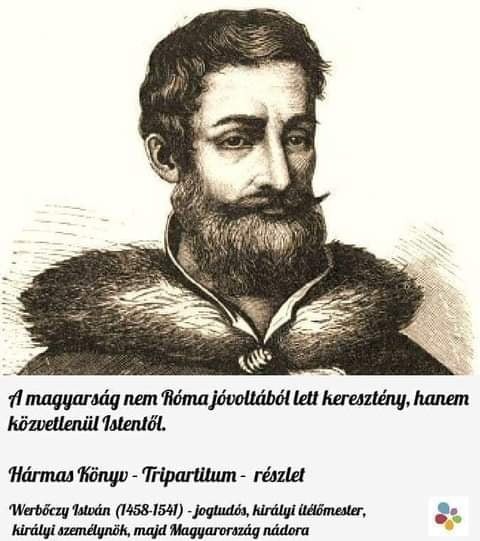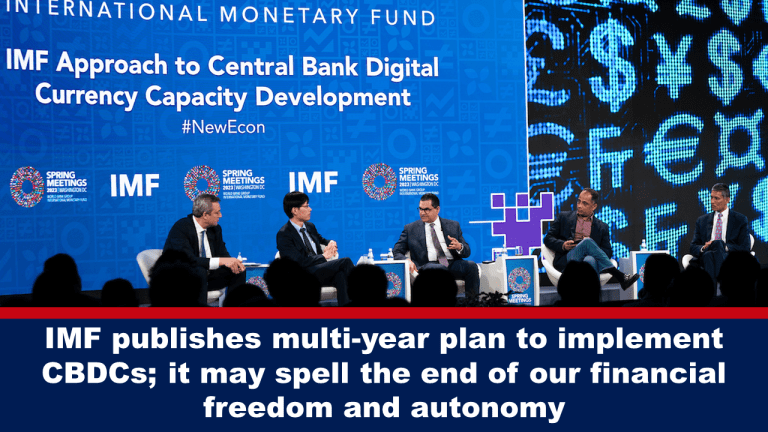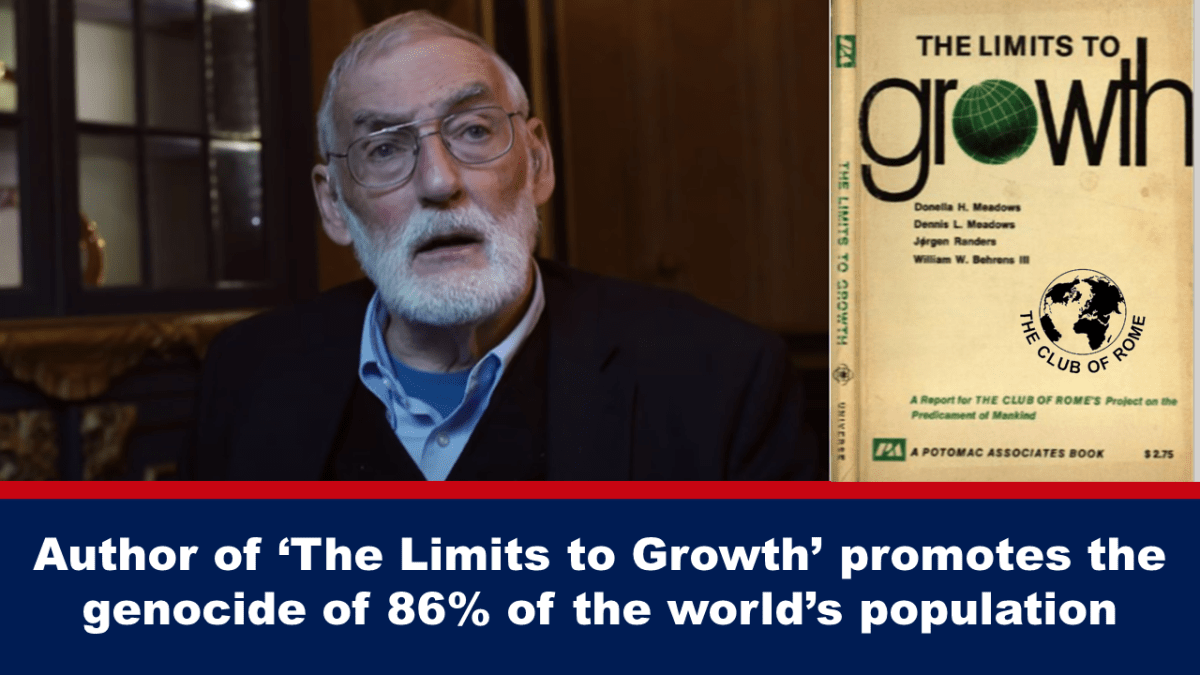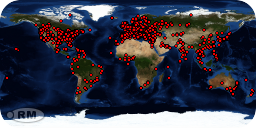Video: Ernst Wolff: Lab meat
It is hardly mentioned, even though the project has been going on for almost ten years - largely unnoticed by the international public. These are artificial meat products produced in laboratories.
It all started in August 2013, when Dr. Mark Post from Maastricht University presented the world with the first cell culture hamburger. The problem was that at the time it cost about 300,000 euros. However, this has fundamentally changed. With the help of wealthy investors, including Google co-founder Sergey Brin, the Mosa Meat company founded by Dr. Post has now been able to reduce production costs to about $10 per hamburger.
Today, Mosa Meat is far from the only company active in this rapidly expanding industry. Investments in laboratory meat production increased to around 60 million dollars in 2019, to 360 million dollars in 2020, and to more than 1 billion dollars in 2022.
A decisive step was taken in 2020, when the Singapore Food Agency was the first in the world to allow the sale of artificially produced chicken, and the product developed by the Eat Just company appeared on a restaurant menu for the first time. Since then, development has been progressing at an ever faster pace. While in 2016 only 4 companies worked on the ingredients, services and end products of laboratory meat, by the end of 2022 there will be 99 companies.
In addition, nearly 40 biotech companies have registered and officially marketed products that provide raw materials for the production of laboratory-grown meat and artificially produced seafood.
Now even individual countries are expressing their interest in laboratory-produced meat. In the United States and the European Union, for example, state funding of research and development was approved for the first time in 2021. China, meanwhile, has signed a $300 million deal to buy lab-grown meat produced in Israel.
In addition, in January 2022, the Communist Party included lab-grown meat and other "foods of the future," such as plant-based eggs, in its 5-year plan. According to UN forecasts, global meat consumption will almost double by 2050, but 60 percent of this will be covered by meat produced in laboratories by 2040. Currently, it is still a problem that about 70 percent of people reject laboratory-produced meat.
However, against this claim, there is already an agenda, which is also being pushed by all means, and which may serve as a justification not only for the introduction of laboratory meat, but even for the general ban of animal products: The fight against climate change is the CO2 attributed to cows and cattle, among others. - and by reducing methane emissions, in accordance with the provisions of the Kyoto Protocol.
The implementation of this agenda, especially supported by the Greens, is now in full swing, and not only the world's largest meat producers, such as Tyson Foods and Cargill, but also billionaires such as Bill Gates and Richard Branson have entered the business. They and other investors obviously have two goals.
On the one hand, they want to ride the gold rush that the widespread introduction of lab-grown meat would mean: It would be possible to do without farmers, animals, feed, veterinarians, stable staff, transport facilities and slaughterhouses, including staff, only robot-controlled factories, and you could earn money with it that is unfathomable to today's mind. But this is only one side of the coin.
It is likely to be even more profitable to own the biotech patents and licenses that are a prerequisite for the production of laboratory meat. This is where the greatest danger of current development lies. If people like Gates, Branson, Brin et al do succeed in obtaining these patents and licenses, it will mean nothing more than the world's supply of laboratory meat eventually falling into the hands of a few billionaires.
The following person's example can show how nightmarish the consequences of this can be. Dr. Rick Klausner, one of the main investors of the fast-growing Dutch laboratory meat production company MEatable, was previously the director of the American National Cancer Institute and the global health director of the Bill and Melinda Gates Foundation.
Considering the enormous power that the World Health Organization (WHO) has acquired in the last 3 years, one can imagine that it would be only a small step to enrich future meat with substances that can be claimed to be the "world's improve your health".
It is time to take action against the development of meat produced in the laboratory and, above all, to expose the biggest lie that the program's advocates are currently "feeding" us: That all this is necessary for the welfare of the animals.
Big investors in laboratory meat include the meat conglomerates Tyson Foods and Cargill, the companies that have made large-scale animal husbandry increasingly brutal in recent decades.
First of all, it should be made aware of the young people who are uncertain about the developments of the past decades and worried about their future. That this lab meat program is not at all about climate change, nor about saving the planet, and especially not about animal welfare. This is all an effort of a narrow elite to accumulate even more wealth, to concentrate even more power, so that they can exercise complete control over us.
It is particularly shameful in the whole thing how the Greens support this agenda with their alleged political correctness and climate catastrophe, and what's more, disguised as a fig leaf of good humanity. That alone should be enough to make any thinking person turn away from them.
Continue to the article
Continue to the article
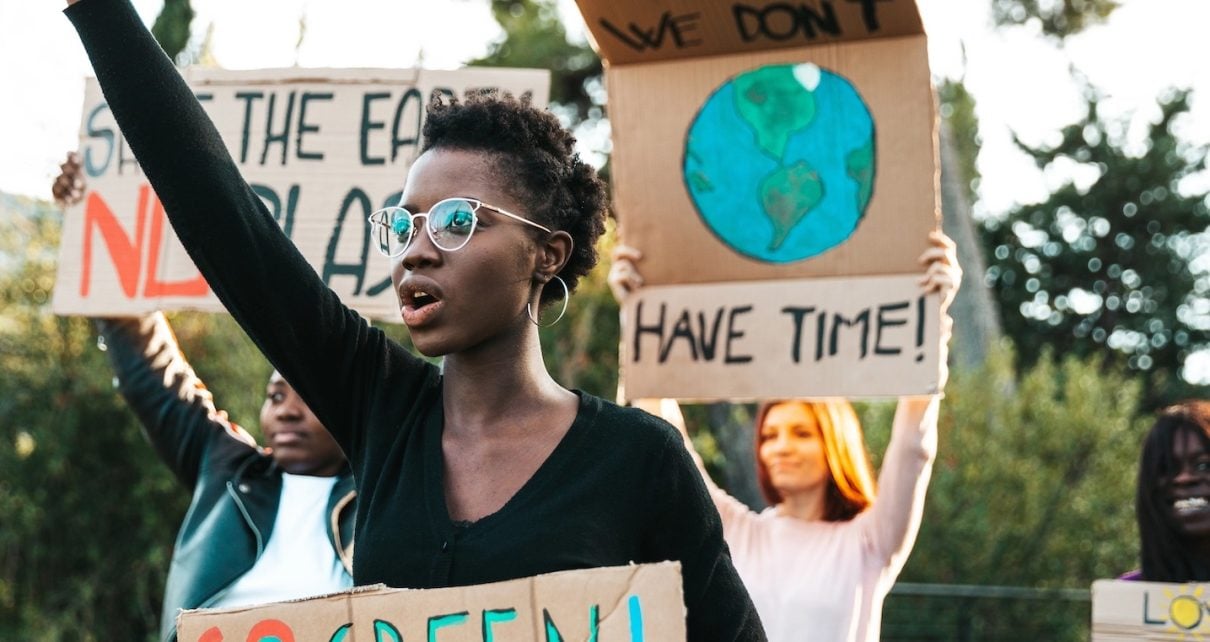 Should the public ignore the Rockefeller Foundation's story as they channel resources to advance Agenda 2030 and the UN's Sustainable Development Goals? In late July 2022, Rockefeller Foundation (RF) President Dr. Rajiv J. Shah released a public letter detailing the organization's plan to increase its resources and focus on addressing climate change. Shah noted that RF has been involved in shaping "the US and global response to the pandemic crises" by funding projects like CommonPass, helping to popularize the concept of vaccine passports. The foundation, founded in 1913, used the Rockefeller family's wealth for "public health" used it to ostensibly promote it by funding mass vaccination campaigns and the establishment of public health authorities around the world. To continue their mission today, Shah said, the RF must "confront climate change head-on. Climate change is a unique threat to humanity," Shah wrote. "We have decided that the Rockefeller Foundation will take concrete steps to transform the way humanity farms and eats, the energy supply of communities and homes, the prevention and control of disease, and the way we live and work. This is how we make the opportunity universal. and make it sustainable." must directly confront climate change. Climate change poses a unique threat to humanity," Shah wrote. "We have decided that The Rockefeller Foundation will take concrete action to transform the way humanity farms and eats, supplies energy to communities and homes, and prevents and defends against disease. , and life and work. This is how we will make the opportunity universal and sustainable." must directly confront climate change. Climate change poses a unique threat to humanity," Shah wrote. "We have decided that The Rockefeller Foundation will take concrete action to transform the way humanity farms and eats, supplies energy to communities and homes, and prevents and defends against disease. , and life and work. This is how we will make the opportunity universal and sustainable." disease prevention and control, as well as life and work. This is how we will make the opportunity universal and sustainable." disease prevention and control, as well as life and work. This is how we will make the opportunity universal and sustainable."
Should the public ignore the Rockefeller Foundation's story as they channel resources to advance Agenda 2030 and the UN's Sustainable Development Goals? In late July 2022, Rockefeller Foundation (RF) President Dr. Rajiv J. Shah released a public letter detailing the organization's plan to increase its resources and focus on addressing climate change. Shah noted that RF has been involved in shaping "the US and global response to the pandemic crises" by funding projects like CommonPass, helping to popularize the concept of vaccine passports. The foundation, founded in 1913, used the Rockefeller family's wealth for "public health" used it to ostensibly promote it by funding mass vaccination campaigns and the establishment of public health authorities around the world. To continue their mission today, Shah said, the RF must "confront climate change head-on. Climate change is a unique threat to humanity," Shah wrote. "We have decided that the Rockefeller Foundation will take concrete steps to transform the way humanity farms and eats, the energy supply of communities and homes, the prevention and control of disease, and the way we live and work. This is how we make the opportunity universal. and make it sustainable." must directly confront climate change. Climate change poses a unique threat to humanity," Shah wrote. "We have decided that The Rockefeller Foundation will take concrete action to transform the way humanity farms and eats, supplies energy to communities and homes, and prevents and defends against disease. , and life and work. This is how we will make the opportunity universal and sustainable." must directly confront climate change. Climate change poses a unique threat to humanity," Shah wrote. "We have decided that The Rockefeller Foundation will take concrete action to transform the way humanity farms and eats, supplies energy to communities and homes, and prevents and defends against disease. , and life and work. This is how we will make the opportunity universal and sustainable." disease prevention and control, as well as life and work. This is how we will make the opportunity universal and sustainable." disease prevention and control, as well as life and work. This is how we will make the opportunity universal and sustainable."IMF publishes multi-year plan to roll out CBDCs
This could spell the end of our financial freedom and autonomy
Rhoda Wilson April 30, 2023 Exposé
On April 10, the International Monetary Fund ("IMF") published the "IMF Approach to Developing Central Banks' Digital Currency Capability" the document. It outlines the IMF's multi-year strategy to support central bank digital currency ("CBDC") adoption, including the development of a live "CBDC handbook" for monetary authorities.
As the manual evolves and contains more and more detail, Chapters 8-11 chapters will be of particular interest to us as they relate to the centralized control over our lives using CBDCs, which makes us,
For example, Chapter 8 will "identify design decisions such as operating model, ownership constraints, programmability, profitability, and degree of centralization." And Chapter 11 "examines the trade-off between data use and privacy," including "what data is generated in CBDC transactions and which institutions have access to it."
Programmable Money and Programmability
There seems to be no clear definition of programmable money.
Last week, Dong He, Deputy Director of the Monetary and Capital Markets Department of the IMF, briefly mentioned the programmability of CBDCs at a seminar on CBDCs. "It can be used as a fiscal tool; it can be used for the Internet of Things". However, he did not elaborate on what "programmability" means and how it affects consumers.
Watch He's presentation at the Asia Pacific Regional Seminar on Central Bank Digital Currency starting at 12:54 in the video HERE .
In June 2021, Fed President Alexander Lee wrote that the term "programmable money" remains poorly defined. Lee distinguishes between "programmable money" and "programmability". It defines "programmability" as "a mechanism for determining the automated behavior of a digital currency by means of a computer program." He identifies two components of "programmable money": the digital form of money and programmability. However, Lee cautions, "It is not clear whether these components alone are sufficient to make a determination, as various combinations of similar technologies to automate payments have been around for decades."
Many argue, for example in a report by the Deutsche Bundesbank, that the addition of programmability to CBDC could bring a multitude of economic benefits. However, The FinReg Blog noted that many of the claimed benefits already exist or can be developed within existing systems.
The SEACEN Center called programmable money money with limits. "It appears to be based on the idea that because money is already digital and exists as records on the computers of commercial and/or central banks, it can therefore be programmed". There can be programmable central bank money, programmable commercial bank money, programmable e-money (sometimes called stable money), and any type of money.
Finextra identified the risks of CBDCs and highlighted the risks of linking CBDCs to digital identities:
Yet linking CBDCs to digital identities seems to be exactly what central bankers are proposing.
Linking CBDCs to Digital Identities
On September 27th, the French central bank - the Banque de France - held an international roundtable, where US and EU central bankers confirmed that the digital dollar and euro, if introduced, would will not be anonymous.
Federal Reserve Chairman Jerome Powell said that one of the characteristics of the introduction of the US CBDC is that "[the CBDC] would be identity-verified, so it would not be anonymous. It would not be an anonymous presentation device."
According to Christine Lagarde, president of the European Central Bank: "As far as anonymity is concerned, it would not be complete anonymity, as in the case of banknotes".
In other words, CBDCs would require some sort of digital identity system. And what is the purpose of a digital identity? The World Economic Forum clearly stated how they envision:
CBDCs, Programmability and Digital Identity
The following article is from the article "IMF is creating a 'CBDC Handbook' for central bank, govt rollouts'" published by The Sociable.
A digital identity encompasses everything that makes you unique in the digital world, and is a system that can bring together all of your most personal intimate data, including the websites you visit, your online purchases, your health information, your financial accounts, and who you are friends with on social media.
It can be used to determine what products, services and information are available to you, and of course it can be used by public and private organizations to deny you that access.
According to the 2021 Annual Economic Report of the Bank for International Settlements ("BIS"): "In the digital age, the most promising way to secure central bank money is an account-based CBDC based on digital identity, with the involvement of the official sector."
In addition to removing complete anonymity, CDBCs also run the risk of recording all transactions while being fully programmable, meaning financial institutions and their customers have full control over where, when and how our money is spent.
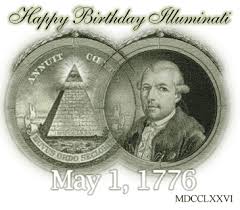 Bank of Russia Deputy Governor Alexei Zabotkin gave a real-world example of what CBDC programmability could look like when he spoke at Cyber Polygon's annual cybersecurity exercise in 2021.
Bank of Russia Deputy Governor Alexei Zabotkin gave a real-world example of what CBDC programmability could look like when he spoke at Cyber Polygon's annual cybersecurity exercise in 2021.
There, Zabotkin explained: "It [the digital ruble] allows better traceability of payments and money flows, and also opens up the possibility of imposing conditions on the permitted use of a particular currency. Imagine giving money to our children in digital rubles, then we can limit its use to things like buying junk food. This would be a useful feature for a customer, and of course hundreds of similar use cases could be invented."
At the BIS Innovation Summit in March 2023, Lagarde highlighted that central banks themselves are not interested in programming CBDCs, but commercial banks are.
"For us [central banks] to issue a digital currency that would be central bank money, it wouldn't be programmable - it wouldn't be linked to any specific restrictions, either in time or in the type of use - for me it would be a voucher. It wouldn't be a digital currency" Lagarde said.
"Those who can associate the use of digital currency with programmability would be the intermediaries - the commercial banks," he added.
As for user anonymity and anonymous transactions, Lagarde acknowledged that "a digital currency will never be as anonymous and in many ways as privacy-protective as cash, so cash will always exist."
At an IMF seminar on October 19, 2020, Augustin Carstens, CEO of the BIS, explained that the main difference between CBDC and cash is that CBDC gives the central bank "absolute control" over the use of CBDC and to enforce the control necessary technology.
"We tend to establish equivalence with cash, and that makes a huge difference," Carstens said in 2020.
"With cash, for example, we don't know, for example, who uses a $100 bill today. We don't know who uses a 1,000-peso bill today.
"The key difference with a CBDC is that the central bank will have full control over the rules and regulations that define the use of the term central bank responsibility, and we will also have the technology to enforce it. "These two issues are
extremely important, and it makes a huge difference to the concept of cash."
In October 2022, IMF Deputy Managing Director Bo Li - the same man now praising the "CBDC Handbook" - explained how CBDCs could be programmed.
"CBDC can enable government agencies and private sector actors to program — create smart contracts — to enable targeted policy functions. For example, welfare payments; for example, consumption coupons; for example, food stamps," Li said.
"With the programming of the CBDC, those [sic] moneys can be precisely targeted, what kind of people can own and what kind of use this money can be put to," he added.
Li also noted that institutions can take advantage of CBDC transaction data following the model of Communist China, where "non-traditional data can be very useful for financial service providers to give me a credit score."
CBDCs, combined with digital identity, undermine the ability of citizens to transact anonymously.
As Professor Rohan Grey, assistant professor at Willamette University College of Law, testified in the US House of Representatives in June 2021: "Transactional anonymity, like anonymity in a broader sense, is a public good and one of the most important cornerstones of political freedom in a democratic society."
Ultimately, a CBDC linked to a digital identity would allow governments and companies to give permissions on what you can buy with your own money, including expiration dates on when you can spend it.
It is a system ripe for total surveillance and control of many aspects of society, paving the way for an authoritarian social credit system that incentivizes, coerces, and otherwise manipulates citizen behavior.
With the forthcoming "CBDC Handbook," the IMF now has a multi-year plan to help central banks and governments around the world implement what could be the end of financial freedom and autonomy as we know it.
Video: Tucker Carlson: keep the books, your sanity depends on it
The more you step out of the physical world, the more you can be manipulated.
This could spell the end of our financial freedom and autonomy
Rhoda Wilson April 30, 2023 Exposé
On April 10, the International Monetary Fund ("IMF") published the "IMF Approach to Developing Central Banks' Digital Currency Capability" the document. It outlines the IMF's multi-year strategy to support central bank digital currency ("CBDC") adoption, including the development of a live "CBDC handbook" for monetary authorities.
As the manual evolves and contains more and more detail, Chapters 8-11 chapters will be of particular interest to us as they relate to the centralized control over our lives using CBDCs, which makes us,
For example, Chapter 8 will "identify design decisions such as operating model, ownership constraints, programmability, profitability, and degree of centralization." And Chapter 11 "examines the trade-off between data use and privacy," including "what data is generated in CBDC transactions and which institutions have access to it."
Programmable Money and Programmability
There seems to be no clear definition of programmable money.
Last week, Dong He, Deputy Director of the Monetary and Capital Markets Department of the IMF, briefly mentioned the programmability of CBDCs at a seminar on CBDCs. "It can be used as a fiscal tool; it can be used for the Internet of Things". However, he did not elaborate on what "programmability" means and how it affects consumers.
Watch He's presentation at the Asia Pacific Regional Seminar on Central Bank Digital Currency starting at 12:54 in the video HERE .
In June 2021, Fed President Alexander Lee wrote that the term "programmable money" remains poorly defined. Lee distinguishes between "programmable money" and "programmability". It defines "programmability" as "a mechanism for determining the automated behavior of a digital currency by means of a computer program." He identifies two components of "programmable money": the digital form of money and programmability. However, Lee cautions, "It is not clear whether these components alone are sufficient to make a determination, as various combinations of similar technologies to automate payments have been around for decades."
Many argue, for example in a report by the Deutsche Bundesbank, that the addition of programmability to CBDC could bring a multitude of economic benefits. However, The FinReg Blog noted that many of the claimed benefits already exist or can be developed within existing systems.
The SEACEN Center called programmable money money with limits. "It appears to be based on the idea that because money is already digital and exists as records on the computers of commercial and/or central banks, it can therefore be programmed". There can be programmable central bank money, programmable commercial bank money, programmable e-money (sometimes called stable money), and any type of money.
It seems that Covid-19 and the unprecedented economic stimulus that followed created a mini-force towards programmable money. As mentioned above, programmable money is money with limitations. An analogy to this is the food voucher, where beneficiaries receive cash-equivalent coupons that can only be spent on food - not on alcohol, horse racing, lottery tickets or anything else. In modern form, these "meal stamps" are digitized tokens that are settled on a blockchain platform with smart contracts.
Programmable Money and CBDC, The SEACEN Centre, 7 December 2020.
Finextra identified the risks of CBDCs and highlighted the risks of linking CBDCs to digital identities:
CBDCs present multiple risks to consumers - financial, economic and human rights risks that can be potentially severe if a CBDC is poorly designed or with bad intentions.
Human rights risks
CBDCs can be used by governments as a tool of surveillance and control if they are not properly designed. All transactions can be recorded and any authority with access to the CBDC ledger can see all transactions. Through the ledger, they can also control individuals - for example, they can write an expiration date on their CBDC, limit the amount of their holdings, change interest rates and prices depending on who the person is, prevent purchases and automatically deduct fines.
The combination of digital identity and CBDC is also a big risk. Digital payments require access and addressability, but these are different from digital identity. In a world of programmable money, digital identity can go beyond simply providing access to funds. The use of funds can also be made dependent on the characteristics of the digital identity. If these funds are in the CBDC, the central bank and with it the government can directly control how you spend and receive the money.
Beware of anyone advocating linking digital identity to CBDC- although digital identity is needed to track down fraudsters, money launderers and other criminals, there is no monetary reason to link CBDC to digital identity.
Social Risks of Central Bank Digital Currencies, Finextra, 17 January 2022.
Yet linking CBDCs to digital identities seems to be exactly what central bankers are proposing.
Linking CBDCs to Digital Identities
On September 27th, the French central bank - the Banque de France - held an international roundtable, where US and EU central bankers confirmed that the digital dollar and euro, if introduced, would will not be anonymous.
Federal Reserve Chairman Jerome Powell said that one of the characteristics of the introduction of the US CBDC is that "[the CBDC] would be identity-verified, so it would not be anonymous. It would not be an anonymous presentation device."
According to Christine Lagarde, president of the European Central Bank: "As far as anonymity is concerned, it would not be complete anonymity, as in the case of banknotes".
In other words, CBDCs would require some sort of digital identity system. And what is the purpose of a digital identity? The World Economic Forum clearly stated how they envision:
This digital identity determines what products, services and information we have access to - or, on the contrary, what is blocked from us.
Identity in the Digital World: Insight Report, World Economic Forum, September 2018, page 5.
CBDCs, Programmability and Digital Identity
The following article is from the article "IMF is creating a 'CBDC Handbook' for central bank, govt rollouts'" published by The Sociable.
A digital identity encompasses everything that makes you unique in the digital world, and is a system that can bring together all of your most personal intimate data, including the websites you visit, your online purchases, your health information, your financial accounts, and who you are friends with on social media.
It can be used to determine what products, services and information are available to you, and of course it can be used by public and private organizations to deny you that access.
According to the 2021 Annual Economic Report of the Bank for International Settlements ("BIS"): "In the digital age, the most promising way to secure central bank money is an account-based CBDC based on digital identity, with the involvement of the official sector."
In addition to removing complete anonymity, CDBCs also run the risk of recording all transactions while being fully programmable, meaning financial institutions and their customers have full control over where, when and how our money is spent.
 Bank of Russia Deputy Governor Alexei Zabotkin gave a real-world example of what CBDC programmability could look like when he spoke at Cyber Polygon's annual cybersecurity exercise in 2021.
Bank of Russia Deputy Governor Alexei Zabotkin gave a real-world example of what CBDC programmability could look like when he spoke at Cyber Polygon's annual cybersecurity exercise in 2021.There, Zabotkin explained: "It [the digital ruble] allows better traceability of payments and money flows, and also opens up the possibility of imposing conditions on the permitted use of a particular currency. Imagine giving money to our children in digital rubles, then we can limit its use to things like buying junk food. This would be a useful feature for a customer, and of course hundreds of similar use cases could be invented."
At the BIS Innovation Summit in March 2023, Lagarde highlighted that central banks themselves are not interested in programming CBDCs, but commercial banks are.
"For us [central banks] to issue a digital currency that would be central bank money, it wouldn't be programmable - it wouldn't be linked to any specific restrictions, either in time or in the type of use - for me it would be a voucher. It wouldn't be a digital currency" Lagarde said.
"Those who can associate the use of digital currency with programmability would be the intermediaries - the commercial banks," he added.
As for user anonymity and anonymous transactions, Lagarde acknowledged that "a digital currency will never be as anonymous and in many ways as privacy-protective as cash, so cash will always exist."
At an IMF seminar on October 19, 2020, Augustin Carstens, CEO of the BIS, explained that the main difference between CBDC and cash is that CBDC gives the central bank "absolute control" over the use of CBDC and to enforce the control necessary technology.
"We tend to establish equivalence with cash, and that makes a huge difference," Carstens said in 2020.
"With cash, for example, we don't know, for example, who uses a $100 bill today. We don't know who uses a 1,000-peso bill today.
"The key difference with a CBDC is that the central bank will have full control over the rules and regulations that define the use of the term central bank responsibility, and we will also have the technology to enforce it. "These two issues are
extremely important, and it makes a huge difference to the concept of cash."
In October 2022, IMF Deputy Managing Director Bo Li - the same man now praising the "CBDC Handbook" - explained how CBDCs could be programmed.
"CBDC can enable government agencies and private sector actors to program — create smart contracts — to enable targeted policy functions. For example, welfare payments; for example, consumption coupons; for example, food stamps," Li said.
"With the programming of the CBDC, those [sic] moneys can be precisely targeted, what kind of people can own and what kind of use this money can be put to," he added.
Li also noted that institutions can take advantage of CBDC transaction data following the model of Communist China, where "non-traditional data can be very useful for financial service providers to give me a credit score."
CBDCs, combined with digital identity, undermine the ability of citizens to transact anonymously.
As Professor Rohan Grey, assistant professor at Willamette University College of Law, testified in the US House of Representatives in June 2021: "Transactional anonymity, like anonymity in a broader sense, is a public good and one of the most important cornerstones of political freedom in a democratic society."
Ultimately, a CBDC linked to a digital identity would allow governments and companies to give permissions on what you can buy with your own money, including expiration dates on when you can spend it.
It is a system ripe for total surveillance and control of many aspects of society, paving the way for an authoritarian social credit system that incentivizes, coerces, and otherwise manipulates citizen behavior.
With the forthcoming "CBDC Handbook," the IMF now has a multi-year plan to help central banks and governments around the world implement what could be the end of financial freedom and autonomy as we know it.
Video: Tucker Carlson: keep the books, your sanity depends on it
The more you step out of the physical world, the more you can be manipulated.
Continue to the article
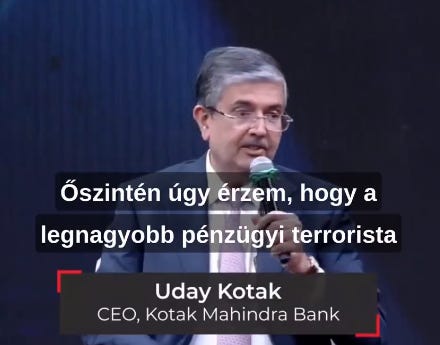 The dollar will lose its role as a reserve currency! The only question is who will fill this void and position.
The dollar will lose its role as a reserve currency! The only question is who will fill this void and position. We are facing a change that occurs only once every 100-150 years. Video: Asia's richest bank on the US dollar. Uday Kotak, the billionaire investor and CEO of Kotak Mahindra Bank. "I honestly feel that the biggest financial terrorist in the world is the American dollar. The dollar is losing its role as a reserve currency! The only question is who will fill this void and position. We are facing a change that only happens once every 100-150 years occurs."
Continue to the article
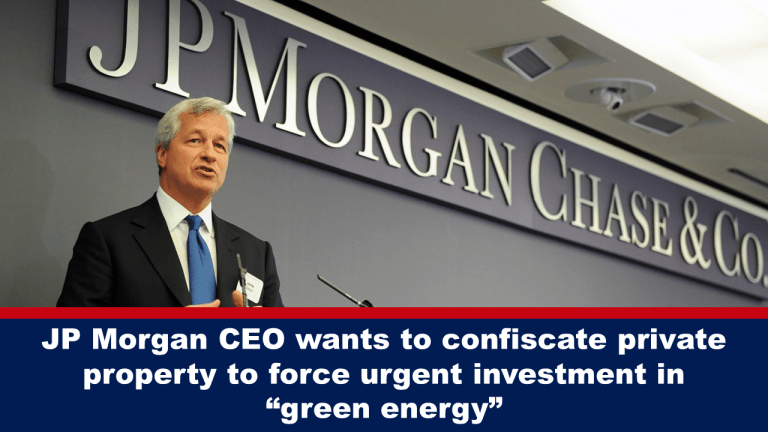 JPMorgan Chase CEO Jamie Dimon, bought by the World Economic Forum, believes the US government should seize private property to fight climate change. This is not an exaggeration. In his annual letter to shareholders dated April 4, 2023, Dimon stated that "governments, businesses and non-governmental organizations" may need "expropriation rights" to "get appropriate investments fairly quickly in grid, solar, for wind and pipeline initiatives". "Expropriation" is a legal term that describes the government's power to expropriate private property for public use, provided the government provides adequate compensation to the private owners. The introduction of socialism would be the fast way to achieve the goal of the World Economic Forum ("WEF") - "You will own nothing and be happy". Dimon jumps right into the middle of it and proposes state ownership and the complete abolition of capitalism. "The need for affordable and reliable energy today and decarbonizing investments for tomorrow highlight the inextricable link between economic growth, energy security and climate change. We need to do more, now," Dimon added. They are trying to create panic over a non-existent problem. We must surrender all our freedoms to the government to prevent natural changes in the weather. You will own nothing and you will be happy." , highlights the inextricable link between economic growth, energy security and climate change. We need to do more, and now," Dimon added. They are trying to create panic over a problem that doesn't exist. We need to hand over all our freedoms to the government to prevent natural changes in the weather. You will own nothing and you will be happy." , highlights the inextricable link between economic growth, energy security and climate change. We need to do more, and now," Dimon added. They are trying to create panic over a problem that doesn't exist. We need to hand over all our freedoms to the government to prevent natural changes in the weather. The need for an affordable and reliable energy supply today, as well as decarbonizing investments for tomorrow, highlights the inextricable link between economic growth, energy security and climate change. We need to do more, and now," Dimon added. They are trying to create panic over a problem that doesn't exist. We need to hand over all our freedoms to the government to prevent natural changes in the weather. The need for an affordable and reliable energy supply today, as well as decarbonizing investments for tomorrow, highlights the inextricable link between economic growth, energy security and climate change. We need to do more, and now," Dimon added. They are trying to create panic over a problem that doesn't exist. We need to hand over all our freedoms to the government to prevent natural changes in the weather.
JPMorgan Chase CEO Jamie Dimon, bought by the World Economic Forum, believes the US government should seize private property to fight climate change. This is not an exaggeration. In his annual letter to shareholders dated April 4, 2023, Dimon stated that "governments, businesses and non-governmental organizations" may need "expropriation rights" to "get appropriate investments fairly quickly in grid, solar, for wind and pipeline initiatives". "Expropriation" is a legal term that describes the government's power to expropriate private property for public use, provided the government provides adequate compensation to the private owners. The introduction of socialism would be the fast way to achieve the goal of the World Economic Forum ("WEF") - "You will own nothing and be happy". Dimon jumps right into the middle of it and proposes state ownership and the complete abolition of capitalism. "The need for affordable and reliable energy today and decarbonizing investments for tomorrow highlight the inextricable link between economic growth, energy security and climate change. We need to do more, now," Dimon added. They are trying to create panic over a non-existent problem. We must surrender all our freedoms to the government to prevent natural changes in the weather. You will own nothing and you will be happy." , highlights the inextricable link between economic growth, energy security and climate change. We need to do more, and now," Dimon added. They are trying to create panic over a problem that doesn't exist. We need to hand over all our freedoms to the government to prevent natural changes in the weather. You will own nothing and you will be happy." , highlights the inextricable link between economic growth, energy security and climate change. We need to do more, and now," Dimon added. They are trying to create panic over a problem that doesn't exist. We need to hand over all our freedoms to the government to prevent natural changes in the weather. The need for an affordable and reliable energy supply today, as well as decarbonizing investments for tomorrow, highlights the inextricable link between economic growth, energy security and climate change. We need to do more, and now," Dimon added. They are trying to create panic over a problem that doesn't exist. We need to hand over all our freedoms to the government to prevent natural changes in the weather. The need for an affordable and reliable energy supply today, as well as decarbonizing investments for tomorrow, highlights the inextricable link between economic growth, energy security and climate change. We need to do more, and now," Dimon added. They are trying to create panic over a problem that doesn't exist. We need to hand over all our freedoms to the government to prevent natural changes in the weather.Continue to the article
 While a separate financial system was emerging in America, the so-called state banking system (discussed here), a significant event was taking place on the other side of the Atlantic. The Congress of Vienna was held from September 1814 to June 1815, dealing with the aftermath of the French Wars of Independence, the Neapolitan Wars, and the dissolution of the Holy Roman Empire. During this time, they proposed the creation of a new world order centered around central banking. Banks have already lent money to every major power except Russia. However, Czar Alexander I (1801-25) refused to participate in the central bankers' plan and instead created the Holy Alliance with Austria and Prussia. This agreement was signed on September 26, 1815 by Austrian Emperor Francis I, III. King Friedrich Wilhelm of Prussia and Tsar Alexander.
While a separate financial system was emerging in America, the so-called state banking system (discussed here), a significant event was taking place on the other side of the Atlantic. The Congress of Vienna was held from September 1814 to June 1815, dealing with the aftermath of the French Wars of Independence, the Neapolitan Wars, and the dissolution of the Holy Roman Empire. During this time, they proposed the creation of a new world order centered around central banking. Banks have already lent money to every major power except Russia. However, Czar Alexander I (1801-25) refused to participate in the central bankers' plan and instead created the Holy Alliance with Austria and Prussia. This agreement was signed on September 26, 1815 by Austrian Emperor Francis I, III. King Friedrich Wilhelm of Prussia and Tsar Alexander.Continue to the article
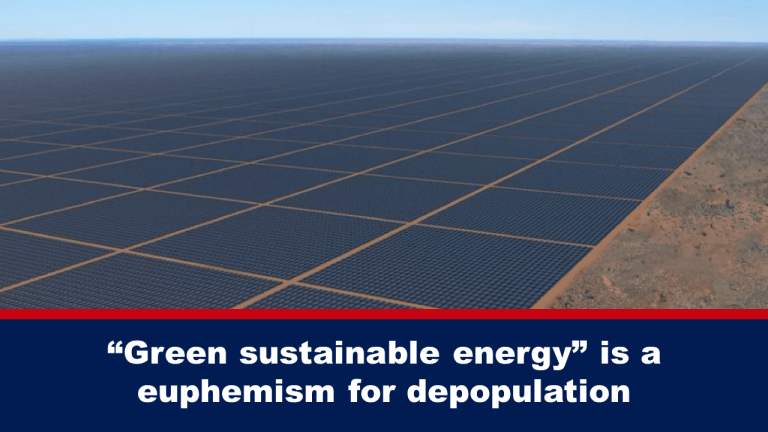 This week, Germany shut down its last three nuclear reactors. In the midst of the biggest self-inflicted energy crisis caused by demands to cut off Europe from cheap Russian gas, Germany's environment minister, Steffi Lemke, declared with all the confidence of a devoted member of a cult: "The German government's position is clear: nuclear power is not green. And it is not is also sustainable... We are entering a new era of energy production". This "new era of energy production" is really just a euphemism for depopulation. The Decarbonization Misconception: For those who are celebrating that the move away from nuclear power is opening the door to solar and wind power, there has been a sad slap in the face of reality. Not only have energy costs skyrocketed wherever "green" power plants have been built, but the toxic waste produced by photovoltaic cells far exceeds the waste produced by the dirtiest nuclear reactor. Solar cells have a life expectancy of 25 years, after which it becomes almost impossible to dispose of the waste, as they contain similar heavy metals and poisons as computers and mobile phones. They also contain large amounts of toxic metals such as lead and carcinogens such as cadmium. Defying the definition of "renewable energy," windmills—which are as tall as a Boeing 747—cannot produce the energy density needed to melt the steel and produce the material needed to build the windmill. The so-called "renewable energy" has a direct and destructive effect on the environment.
This week, Germany shut down its last three nuclear reactors. In the midst of the biggest self-inflicted energy crisis caused by demands to cut off Europe from cheap Russian gas, Germany's environment minister, Steffi Lemke, declared with all the confidence of a devoted member of a cult: "The German government's position is clear: nuclear power is not green. And it is not is also sustainable... We are entering a new era of energy production". This "new era of energy production" is really just a euphemism for depopulation. The Decarbonization Misconception: For those who are celebrating that the move away from nuclear power is opening the door to solar and wind power, there has been a sad slap in the face of reality. Not only have energy costs skyrocketed wherever "green" power plants have been built, but the toxic waste produced by photovoltaic cells far exceeds the waste produced by the dirtiest nuclear reactor. Solar cells have a life expectancy of 25 years, after which it becomes almost impossible to dispose of the waste, as they contain similar heavy metals and poisons as computers and mobile phones. They also contain large amounts of toxic metals such as lead and carcinogens such as cadmium. Defying the definition of "renewable energy," windmills—which are as tall as a Boeing 747—cannot produce the energy density needed to melt the steel and produce the material needed to build the windmill. The so-called "renewable energy" has a direct and destructive effect on the environment.Continue to the article
 While online trade was boosted by the coronavirus epidemic, and then the war and runaway inflation put the brakes on online trade, the competition on the Hungarian market became more and more intense. The increase in traffic will probably have to wait until the second half of 2023, when inflation may slow down somewhat. In the last couple of years, the number of parcel machines in major cities has exploded, but delivery by courier is still the most popular method. In the period before the coronavirus, the parcel delivery market had a steady and predictable growth path, with which both the traders and the service sector could calculate. Of course, there were fluctuations, but the growth of GLS was also well planned. However, Covid has completely turned this world upside down. The e-commerce market was in a fortunate position, the demands increased to such an extent that there was no question: the expansion of the market will be huge, rather we also worked on being able to meet the increased demands from one day to the next. I think this was successful, the feedback also supported this.
While online trade was boosted by the coronavirus epidemic, and then the war and runaway inflation put the brakes on online trade, the competition on the Hungarian market became more and more intense. The increase in traffic will probably have to wait until the second half of 2023, when inflation may slow down somewhat. In the last couple of years, the number of parcel machines in major cities has exploded, but delivery by courier is still the most popular method. In the period before the coronavirus, the parcel delivery market had a steady and predictable growth path, with which both the traders and the service sector could calculate. Of course, there were fluctuations, but the growth of GLS was also well planned. However, Covid has completely turned this world upside down. The e-commerce market was in a fortunate position, the demands increased to such an extent that there was no question: the expansion of the market will be huge, rather we also worked on being able to meet the increased demands from one day to the next. I think this was successful, the feedback also supported this.Continue to the article
 Under the "One Health" program, the World Health Organization would have the authority to make decisions on diet, agriculture and animal husbandry, pollution, population movements and more. Taxpayers would finance the system - companies would profit from it. The World Health Organization (WHO) is trying to consolidate its control over global health by amending the International Health Regulations (IHR) and the Pandemic Treaty. The Pandemic Treaty gives the WHO much more power than the control of pandemics. It emphasizes the "One Health" agenda, which integrates human health, animal health and environmental considerations. "One Health" schedule, WHO would have the power to make decisions on diet, agriculture and livestock, pollution, population movements and more. Private interests exercise enormous power over the WHO, and much of the funding is "earmarked", that is, earmarked for specific programmes. WHO cannot get these funds to where they are most needed. This also greatly influences what and how the WHO does. The WHO is therefore an organization that does what its funders tell it to do. The globalist takeover depends on the successful feedback of surveillance of virus variants, the declaration of potential risk, followed by lockdowns and restrictions, and then the mass vaccination of the population to "remove" the restrictions of the pandemic in order to, then another observation and so on. The financing of this system comes primarily from taxpayers, while the profits go to the companies and their investors. In the March 22nd video below, PANDA Science Sense Society executive committee member Dr. David Bell reviews the new international pandemic treaty proposed by the World Health Organization - what it is and how it will affect democracy and freedom worldwide - and proposed amendments to the WHO IHR.
Under the "One Health" program, the World Health Organization would have the authority to make decisions on diet, agriculture and animal husbandry, pollution, population movements and more. Taxpayers would finance the system - companies would profit from it. The World Health Organization (WHO) is trying to consolidate its control over global health by amending the International Health Regulations (IHR) and the Pandemic Treaty. The Pandemic Treaty gives the WHO much more power than the control of pandemics. It emphasizes the "One Health" agenda, which integrates human health, animal health and environmental considerations. "One Health" schedule, WHO would have the power to make decisions on diet, agriculture and livestock, pollution, population movements and more. Private interests exercise enormous power over the WHO, and much of the funding is "earmarked", that is, earmarked for specific programmes. WHO cannot get these funds to where they are most needed. This also greatly influences what and how the WHO does. The WHO is therefore an organization that does what its funders tell it to do. The globalist takeover depends on the successful feedback of surveillance of virus variants, the declaration of potential risk, followed by lockdowns and restrictions, and then the mass vaccination of the population to "remove" the restrictions of the pandemic in order to, then another observation and so on. The financing of this system comes primarily from taxpayers, while the profits go to the companies and their investors. In the March 22nd video below, PANDA Science Sense Society executive committee member Dr. David Bell reviews the new international pandemic treaty proposed by the World Health Organization - what it is and how it will affect democracy and freedom worldwide - and proposed amendments to the WHO IHR.Continue to the article
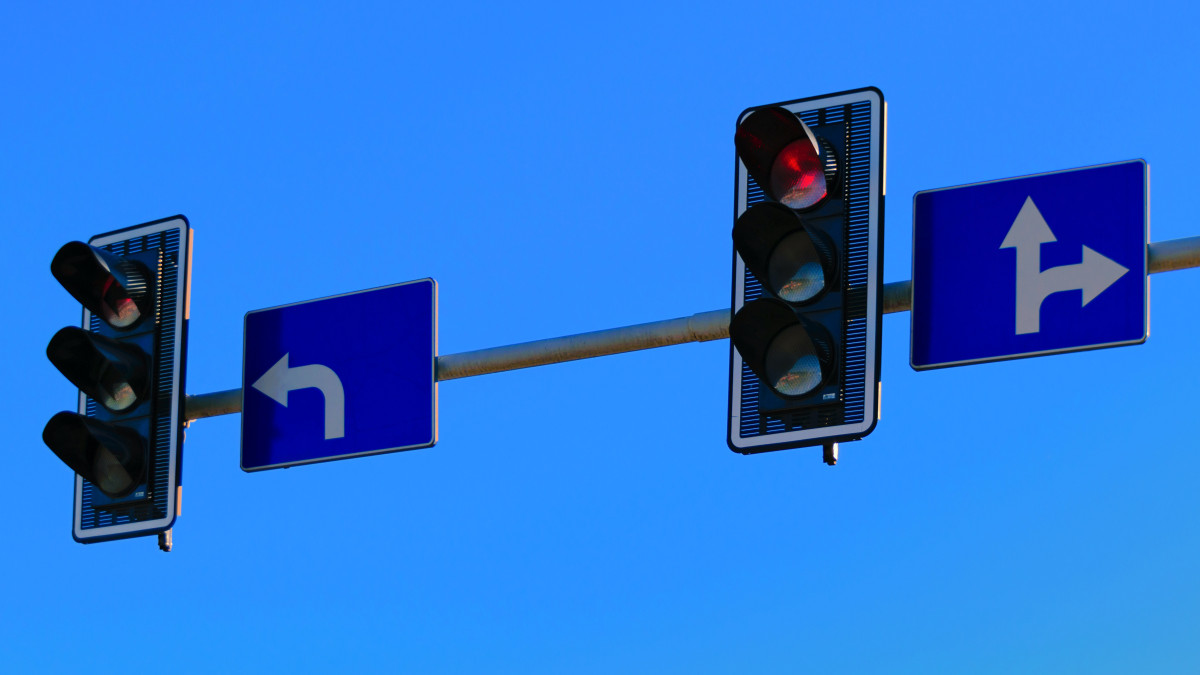 At the BME, they are not only thinking about this issue, but the transfer of traffic control to the new era is taking place. A traffic management system based on artificial intelligence was developed at BME. The system can be used anywhere and at any time, controlled so that vehicles spend as little time as possible in traffic. Name: Citi AI (pronounced "síti éáj"). What data do you use? Real-time data from traffic monitoring cameras, mobile apps, and public transport devices. The system not only analyzes, but also predicts the traffic conditions in advance, so it organizes already planned, giving intervention suggestions to the dispatcher, and can even send a message to the public transport passenger information system. In this way, instead of the usual route planning applications, travelers and passengers can use an application tailored to the needs of the given city
At the BME, they are not only thinking about this issue, but the transfer of traffic control to the new era is taking place. A traffic management system based on artificial intelligence was developed at BME. The system can be used anywhere and at any time, controlled so that vehicles spend as little time as possible in traffic. Name: Citi AI (pronounced "síti éáj"). What data do you use? Real-time data from traffic monitoring cameras, mobile apps, and public transport devices. The system not only analyzes, but also predicts the traffic conditions in advance, so it organizes already planned, giving intervention suggestions to the dispatcher, and can even send a message to the public transport passenger information system. In this way, instead of the usual route planning applications, travelers and passengers can use an application tailored to the needs of the given cityContinue to the article
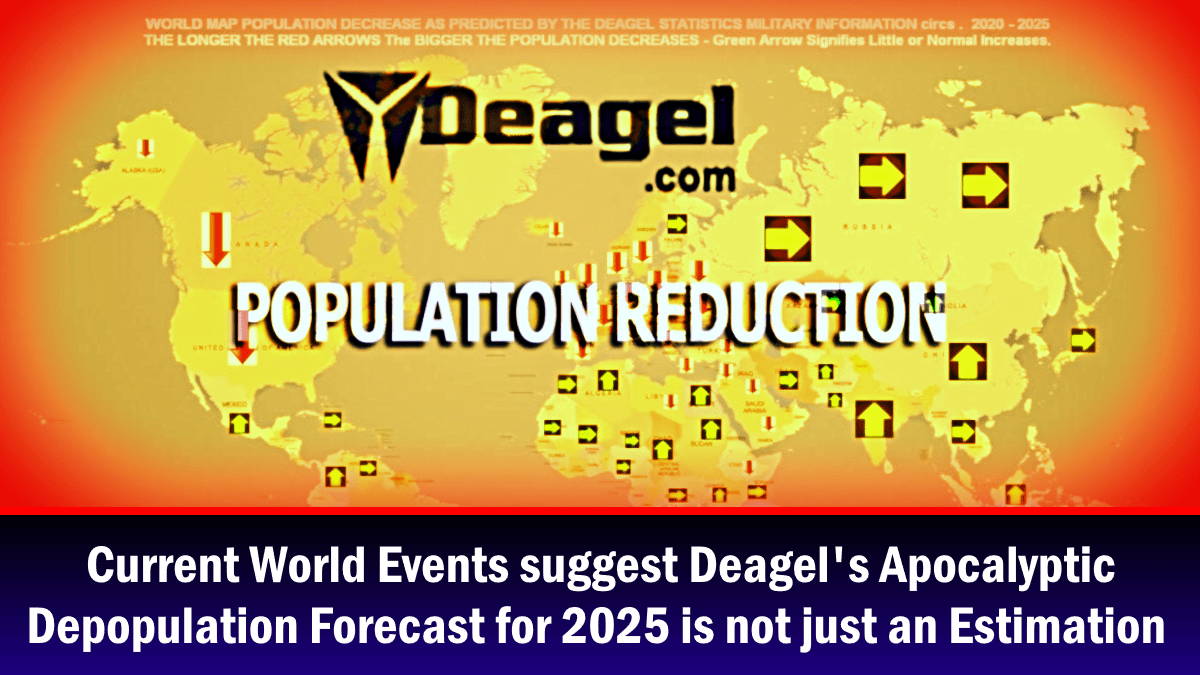 In October 2020, Swiss lawyer Michael Lusk wrote an article on his LinkedIn page in which he urged serious attention to Deagel's 2025 forecast in the wake of the coronavirus "pandemic". Lusk's article focused on the economic well-being of people comparing citizens of NATO and non-NATO countries. Based on Deagel's 2025 forecast, Lusk wrote: "In Deagel's picture of 2025, Russia is prosperous while Europe is ruined. Deagel indicates that Britain will be most comprehensively ruined". Deagel.com's infamous 2025 population forecast was removed from their website in April 2021, but the content was reproduced by Nobul Art for reference. In a September 2021 article, Metallicman - who characterized Deagel as a minor branch of US military intelligence - investigated what the population decline in the 2025 Deagel forecast could mean is what we are witnessing at that time. "All kinds of people are slicing and dicing these numbers," he wrote, then discussed some theories. While Metallicman disagreed with these theories, he acknowledged, "They do point to something interesting. That there is a direct correlation between nations that give mRNA vaccines and those that don't."
In October 2020, Swiss lawyer Michael Lusk wrote an article on his LinkedIn page in which he urged serious attention to Deagel's 2025 forecast in the wake of the coronavirus "pandemic". Lusk's article focused on the economic well-being of people comparing citizens of NATO and non-NATO countries. Based on Deagel's 2025 forecast, Lusk wrote: "In Deagel's picture of 2025, Russia is prosperous while Europe is ruined. Deagel indicates that Britain will be most comprehensively ruined". Deagel.com's infamous 2025 population forecast was removed from their website in April 2021, but the content was reproduced by Nobul Art for reference. In a September 2021 article, Metallicman - who characterized Deagel as a minor branch of US military intelligence - investigated what the population decline in the 2025 Deagel forecast could mean is what we are witnessing at that time. "All kinds of people are slicing and dicing these numbers," he wrote, then discussed some theories. While Metallicman disagreed with these theories, he acknowledged, "They do point to something interesting. That there is a direct correlation between nations that give mRNA vaccines and those that don't."Continue to the article
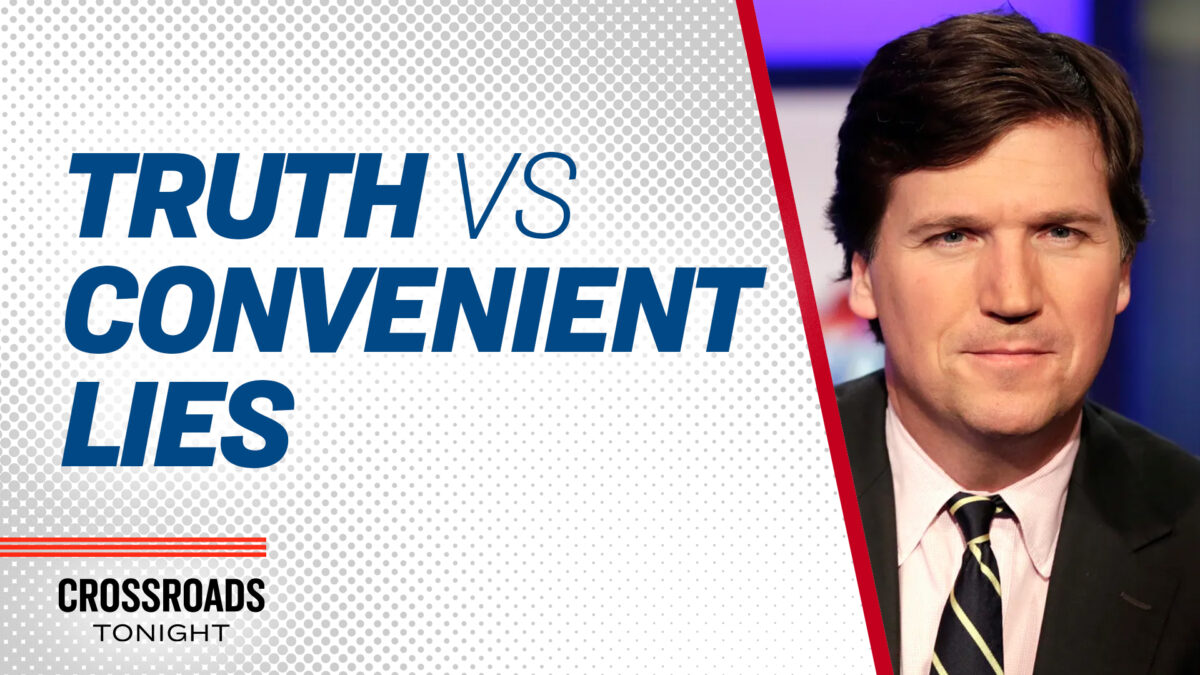 At the 2023 White House Correspondents' Dinner in Washington, D.C., President Joe Biden declared that "poison is running through our democracy and some of the extremist media. The truth is buried by lies, and lies are buried by the honest truth." But what exactly is "extremist media" and what is this alleged "poison" permeating the American system? In the United States, there is a fundamental debate about truth and whether voices can be allowed to challenge established narratives. Tucker Carlson struck a chord in a video posted on Twitter after leaving Fox News. In it, he sparks a new debate for the world's news channels, questioning whether the stories they choose really matter to the public, and even more deeply questioning why important stories are not being discussed.
At the 2023 White House Correspondents' Dinner in Washington, D.C., President Joe Biden declared that "poison is running through our democracy and some of the extremist media. The truth is buried by lies, and lies are buried by the honest truth." But what exactly is "extremist media" and what is this alleged "poison" permeating the American system? In the United States, there is a fundamental debate about truth and whether voices can be allowed to challenge established narratives. Tucker Carlson struck a chord in a video posted on Twitter after leaving Fox News. In it, he sparks a new debate for the world's news channels, questioning whether the stories they choose really matter to the public, and even more deeply questioning why important stories are not being discussed.Continue to the article
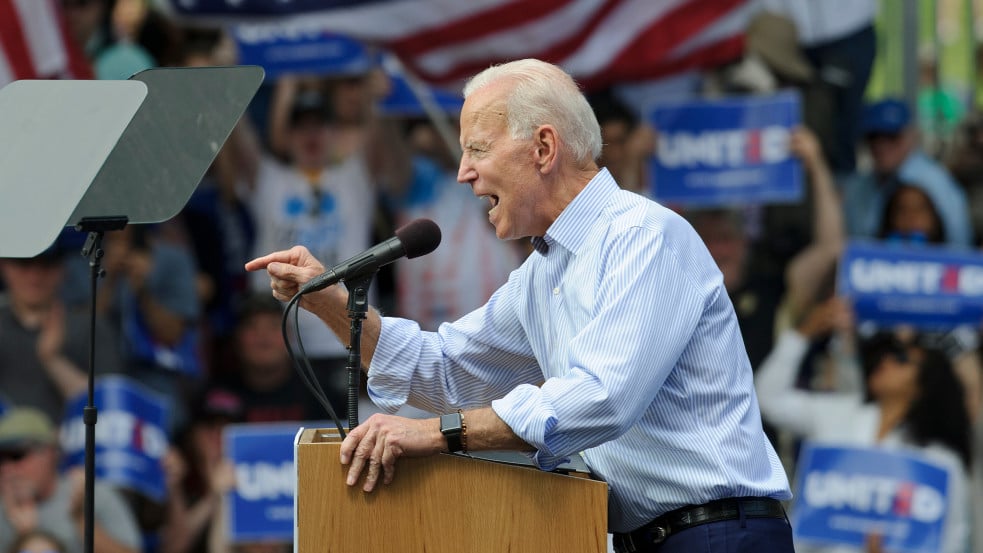 A LOT of people were outraged by the words of the American president. US President Joe Biden's statement in which he spoke about American children went viral on social media. During the press conference held at the White House on the occasion of the Teacher of the Year event, US President Joe Biden said the ominous sentences while praising an Oklahoma high school teacher. The president agreed with Rebekah Peterson's thoughts, according to which there is no such thing as someone else's child. Biden continued, "every child of our nation is our child." Social media users interpreted what was said as if Biden was saying that children are the property of the nation and do not primarily belong to the parents. According to analysts, a radical left-wing position is that wants to own the children. And a pro-life activist drew the logical conclusion that, according to them, with each abortion, others kill her child. And a Republican representative drew the attention of his followers to the fact that the last time the state wanted to own children was in the Soviet Union. He emphasized that now more than ever, it is necessary to stand up for parental rights.
A LOT of people were outraged by the words of the American president. US President Joe Biden's statement in which he spoke about American children went viral on social media. During the press conference held at the White House on the occasion of the Teacher of the Year event, US President Joe Biden said the ominous sentences while praising an Oklahoma high school teacher. The president agreed with Rebekah Peterson's thoughts, according to which there is no such thing as someone else's child. Biden continued, "every child of our nation is our child." Social media users interpreted what was said as if Biden was saying that children are the property of the nation and do not primarily belong to the parents. According to analysts, a radical left-wing position is that wants to own the children. And a pro-life activist drew the logical conclusion that, according to them, with each abortion, others kill her child. And a Republican representative drew the attention of his followers to the fact that the last time the state wanted to own children was in the Soviet Union. He emphasized that now more than ever, it is necessary to stand up for parental rights.Continue to the article
 Orbán permissively approves that the parent should be happy for the little one, but as a public good, he puts his hands on it. He doesn't teach him, dumb him down, make him a line worker or a servant, so he keeps it for his own benefit. "A child is also a public good, in addition to being his own personal happiness, a value for every parent. We support those who take on such a lifestyle." - said the kind leader, from which it appears, he allows the parent to be happy for the little one, but as a public good, he puts his hands on him, does not teach him, dumb him down, make him a line worker or a servant, ergo he keeps it for his own benefit. However, the literature calls the organism that suffers this fate quite differently. As well as the NER: there is no human resources ministry anywhere else in the world.
Orbán permissively approves that the parent should be happy for the little one, but as a public good, he puts his hands on it. He doesn't teach him, dumb him down, make him a line worker or a servant, so he keeps it for his own benefit. "A child is also a public good, in addition to being his own personal happiness, a value for every parent. We support those who take on such a lifestyle." - said the kind leader, from which it appears, he allows the parent to be happy for the little one, but as a public good, he puts his hands on him, does not teach him, dumb him down, make him a line worker or a servant, ergo he keeps it for his own benefit. However, the literature calls the organism that suffers this fate quite differently. As well as the NER: there is no human resources ministry anywhere else in the world.Continue to the article
 U.S. President Joe Biden and Philippine President Ferdinand Marcos Jr. will focus on curbing Beijing's aggressive expansion along trade routes and strategic islands in the South China Sea at the White House. Marcos arrived in Washington on Sunday (Monday in Manila) for a four-day trip that will culminate in a meeting with Biden. "It is clear that we are in a period of deep consistency in terms of our commitments in the Indo-Pacific region," a senior US official told reporters before Marcos' arrival. "This is the first meeting of this level and intensity between the United States and the Philippines in decades," said the official, who spoke on condition of anonymity.
U.S. President Joe Biden and Philippine President Ferdinand Marcos Jr. will focus on curbing Beijing's aggressive expansion along trade routes and strategic islands in the South China Sea at the White House. Marcos arrived in Washington on Sunday (Monday in Manila) for a four-day trip that will culminate in a meeting with Biden. "It is clear that we are in a period of deep consistency in terms of our commitments in the Indo-Pacific region," a senior US official told reporters before Marcos' arrival. "This is the first meeting of this level and intensity between the United States and the Philippines in decades," said the official, who spoke on condition of anonymity.Continue to the article
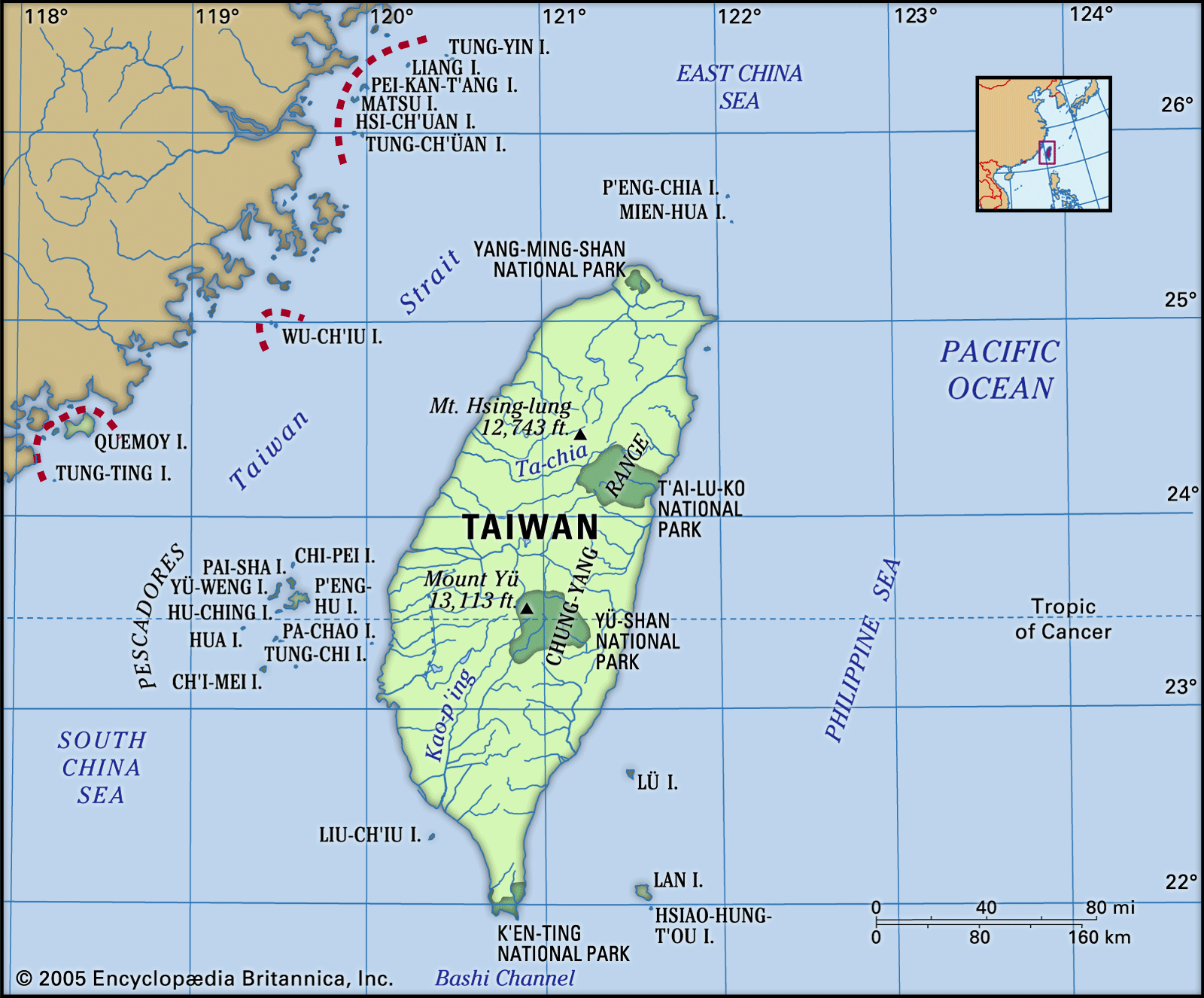 The Biden agenda - the destruction of the USA and the world in less than 4 years. Axios warned Monday night that America's allies are preparing for a possible war over Taiwan. A war between the US and China over Taiwan would be a nightmare scenario for America's Pacific allies, but it is becoming increasingly clear what role they could play in the event of a war. The big picture: French President Emmanuel Macron said last month that Europe "must not get involved in crises that are not ours," such as the escalation over Taiwan sparked by the US-China rivalry. US allies in the region cannot afford this luxury. The US has not officially committed itself to defending Taiwan, but President Biden has repeatedly stated, for Washington to intervene. Even without an invasion, a crisis in Taiwan could take different forms - a blockade, cyberwar or attacks on coastal islands. In both cases, US allies in the region would play a decisive role. The News: Philippine President Bongbong Marcos visited the White House today, shortly after the largest-ever US-Philippines annual military exercises. For the first time, the military exercises focused in part on securing a 70-mile-wide channel between the Philippines and the northern islands of Taiwan. As US and Philippine forces prepared for a possible conflict with China, Chinese Foreign Minister Qin Gang visited Manila and warned the Philippines - a US ally that is Marcos's predecessor - Under Rodrigo Duterte, he got closer to Beijing - so that they "don't stand aside". Earlier this year, Marcos granted the US access to four new bases, three of which are located in the north and are directed against Taiwan.
The Biden agenda - the destruction of the USA and the world in less than 4 years. Axios warned Monday night that America's allies are preparing for a possible war over Taiwan. A war between the US and China over Taiwan would be a nightmare scenario for America's Pacific allies, but it is becoming increasingly clear what role they could play in the event of a war. The big picture: French President Emmanuel Macron said last month that Europe "must not get involved in crises that are not ours," such as the escalation over Taiwan sparked by the US-China rivalry. US allies in the region cannot afford this luxury. The US has not officially committed itself to defending Taiwan, but President Biden has repeatedly stated, for Washington to intervene. Even without an invasion, a crisis in Taiwan could take different forms - a blockade, cyberwar or attacks on coastal islands. In both cases, US allies in the region would play a decisive role. The News: Philippine President Bongbong Marcos visited the White House today, shortly after the largest-ever US-Philippines annual military exercises. For the first time, the military exercises focused in part on securing a 70-mile-wide channel between the Philippines and the northern islands of Taiwan. As US and Philippine forces prepared for a possible conflict with China, Chinese Foreign Minister Qin Gang visited Manila and warned the Philippines - a US ally that is Marcos's predecessor - Under Rodrigo Duterte, he got closer to Beijing - so that they "don't stand aside". Earlier this year, Marcos granted the US access to four new bases, three of which are located in the north and are directed against Taiwan.Continue to the article
 The Damascus government must restore the rule of law throughout Syria, ending the presence of foreign armed groups and terrorists, the foreign ministers of Syria, Saudi Arabia, Jordan, Egypt and Iraq said on Monday after meeting in Amman. Jordan hosted the meeting, the first of its kind since Syria's membership of the Arab League was suspended in 2011. Prior to the multilateral meeting, Syrian Foreign Minister Faisal Mekdad met with his Jordanian counterpart Ayman Safadi to discuss refugees, border security and water issues, Amman said. In a joint statement shared by state news agencies, the five ministers called for "an end to terrorist organizations" and "armed groups". presence in Syria and "neutralize their ability to threaten regional and international security". They also pledged to "support Syria and its institutions in establishing control over its entire territory and enforcing the rule of law."
The Damascus government must restore the rule of law throughout Syria, ending the presence of foreign armed groups and terrorists, the foreign ministers of Syria, Saudi Arabia, Jordan, Egypt and Iraq said on Monday after meeting in Amman. Jordan hosted the meeting, the first of its kind since Syria's membership of the Arab League was suspended in 2011. Prior to the multilateral meeting, Syrian Foreign Minister Faisal Mekdad met with his Jordanian counterpart Ayman Safadi to discuss refugees, border security and water issues, Amman said. In a joint statement shared by state news agencies, the five ministers called for "an end to terrorist organizations" and "armed groups". presence in Syria and "neutralize their ability to threaten regional and international security". They also pledged to "support Syria and its institutions in establishing control over its entire territory and enforcing the rule of law."Continue to the article
Continue to the article
 According to a former American intelligence officer, the Ukrainian president will not survive the war, either the people or the army will overthrow his power. Every day that Ukrainian President Volodymyr Zelensky prolongs the conflict increases the risk of his own death. A former American intelligence officer, ex-marine, Scott Ritter, discussed this in a YouTube program. The longer he sits in power, the more certain his death is coming closer and closer. If he doesn't resign in time, he won't live long - said Ritter, who believes that either a series of demonstrations similar to Maidan or the military will overthrow him. According to the Russian newspaper RIA Novosti, Ritter said that Zelensky's popularity is constantly decreasing and corruption is increasing in the country. True, he did not reveal what he based this information on. According to him, it was also a wrong move by Zelensky to send a large number of conscripted Ukrainian soldiers to certain death in Bakhmut. At the same time, the RIA does not mention that the Russian army is suffering even heavier losses in the siege, and on Monday its military fortunes already turned, when the Ukrainians successfully liberated several blocks of houses.
According to a former American intelligence officer, the Ukrainian president will not survive the war, either the people or the army will overthrow his power. Every day that Ukrainian President Volodymyr Zelensky prolongs the conflict increases the risk of his own death. A former American intelligence officer, ex-marine, Scott Ritter, discussed this in a YouTube program. The longer he sits in power, the more certain his death is coming closer and closer. If he doesn't resign in time, he won't live long - said Ritter, who believes that either a series of demonstrations similar to Maidan or the military will overthrow him. According to the Russian newspaper RIA Novosti, Ritter said that Zelensky's popularity is constantly decreasing and corruption is increasing in the country. True, he did not reveal what he based this information on. According to him, it was also a wrong move by Zelensky to send a large number of conscripted Ukrainian soldiers to certain death in Bakhmut. At the same time, the RIA does not mention that the Russian army is suffering even heavier losses in the siege, and on Monday its military fortunes already turned, when the Ukrainians successfully liberated several blocks of houses.'Limits to Growth' author advocates genocide of 86% of world's population
Rhoda Wilson May 2, 2023 Exposé
MP confirms UK will join WHO pandemic treaty
JP Morgan CEO wants to confiscate private property to force urgent investment to "green energy".
Dennis Meadows, one of the main authors of the book The Limits of Growth of the Club of Rome, is an honorary member of the Club of Rome and a member of the World Economic Forum. If we thought that his ideology had softened and become less anti-human since the publication of his book, we would be wrong.
Here's a 2017 video in which Meadows reflects on his hopes that the inevitable genocide of 86% of the world's population can be accomplished peacefully under a "benevolent" dictatorship. He said,
"But we want freedom and we want a high standard of living, so we're going to have a billion people. And now we're down to seven, so we've got to go back. I hope that it goes slowly, relatively slowly, and that it can be done in a relatively equal way, you know people can share experiences."
We Love Earth: Dennis Meadows Interview 4/4 page (The "peaceful collapse" and many revolutions...), September 1, 2017 (11 minutes)
As it turns out at the end of the article, it is no coincidence that Meadows' words echo the words of the 1995 Global Biodiversity Assessment, first presented at the UN Climate Change Conference (COP1), which states:
What proponents of this ideology seem to fail to mention is that according to the Worldometer, the world population is currently over 8 billion, which does not match their fear-mongering predictions. They have good reason to avoid real-world scenarios, because their models are magic tricks, manipulating data.
While many are familiar with Neil Ferguson's manipulation of predictive models during the covid-19 crisis, a network of influential Malthusians have used the same tactics to sell and advance their agenda for much of the past century.
The Malthusians are the disciples of Thomas Malthus (1766-1834). Malthus promoted the mathematical thesis that population levels always tend toward geometric growth, while agricultural resources tend toward arithmetic growth, resulting in relatively predictable "tipping points." Malthus believed that the social engineers representing the British Empire should use these "crisis points" to scientifically control the "human herd". Malthus believed that nature had endowed the ruling class with certain tools to enable them to carry out this important task - namely, war, famine and disease.
Founded in 1968, the Club of Rome soon established branches throughout the Western world with members who all agreed that the best form of government for society was a scientific dictatorship.
It is a globalist non-governmental organization ("NGO") that convenes meetings of heads of state, members of royal families, business leaders, international financiers, academic scientists, laboratory scientists and global government institutions - such as the United Nations ("UN"). between the leaders of the World Bank, the International Monetary Fund ("IMF") and the Organization for Economic Co-operation and Development ("OECD"). The Club of Rome organizes meetings modeled on the "Round Table" structure of the Bilderberg Group, the Royal Institute of International Affairs ("RIIA") and the Council on Foreign Relations ("CFR"), where delegates discuss the global economy, the world's natural and human resources, and the public and by the private sector,
In 1972, the Club of Rome published the results of computer-simulated forecasts by a team of statisticians recruited by the Massachusetts Institute of Technology ("MIT") in its publication The Limits to Growth. It was the culmination of a two-year study by the MIT team led by Jay Forrester and Dennis Meadows. The Limits to Growth is arguably the most influential book on "sustainability". This became the bible and blueprint of the new anti-humanist movement that gave birth to today's Green New Deal program.
The book The Limits of Growth by the Club of Rome is not only Malthusian in principle, but a review of the bibliography reveals that behind the book there are numerous Malthusian-eugenicists and extensive quotes from related institutions dedicated to population control.
According to a 2012 article celebrating the book's 40th anniversary, "[The Limits to Growth] is worth revisiting today because, more than any other book, it introduced the concept of anthropocentric [man-made] climate change to a mass audience." The book Limits to Growth is worth picking up again for other reasons as well.
One reason is that The Limits to Growth was the first of its kind to combine global temperature with economic variables such as population growth, resource loss, and the underdetermined category of "pollution." By using linear equations to extrapolate trends into the future, Meadows and his co-authors - one of whom was his wife - set the stage for two big mistakes:
- The fabric of physical space-time that makes up the discoverable universe is inherently non-linear and thus cannot be expressed by any form of linear equations, regardless of computing power. Human creative thought is most distinctly non-linear, as it is tied to non-formalizable states of being such as inspiration, love of truth, dignity, and beauty that no binary system can approximate. The Club of Rome programmers ignored these facts and assumed that the universe was as binary as their software.
- The data lines themselves could easily be distorted and transformed to suit the dictates of computer programmers seeking to shape government policy. We have already seen how this technique was used to create false outcomes for future scenarios under Neil Ferguson of Imperial College, and the same technique was used in ecological modelling.
Another reason to revisit The Limits to Growth is to shed light on the impact it had and still has on transnational organizations. New Age guru Barbara Marx Hubbard - who called for the extermination of a quarter of the human population to usher in a new world order - has for decades been a proponent of transhumanism and Malthusian sustainable development, which is at the heart of the Great Reboot and the Fourth Industrial Revolution. Hubbard's Malthusian overpopulation theories were partly inspired by The Limits to Growth. In fact, there are several passages in Hubbard's Co-Creation that warn of Malthusian "limits to growth" that could lead to ecological disaster. He also personally met the co-founder of the Roman Club, Aurelio Peccei,
Last but not least, here is the member of the Club of Rome and the author of the book "The Limits to Growth", who manipulated his forecasting models in the hope that a dictatorship would slowly and "peacefully" exterminate 86% of the world's population.
No one should celebrate The Limits to Growth or the agenda it supports because it promotes your destruction.
Rhoda Wilson May 2, 2023 Exposé
MP confirms UK will join WHO pandemic treaty
JP Morgan CEO wants to confiscate private property to force urgent investment to "green energy".
Dennis Meadows, one of the main authors of the book The Limits of Growth of the Club of Rome, is an honorary member of the Club of Rome and a member of the World Economic Forum. If we thought that his ideology had softened and become less anti-human since the publication of his book, we would be wrong.
Here's a 2017 video in which Meadows reflects on his hopes that the inevitable genocide of 86% of the world's population can be accomplished peacefully under a "benevolent" dictatorship. He said,
"But we want freedom and we want a high standard of living, so we're going to have a billion people. And now we're down to seven, so we've got to go back. I hope that it goes slowly, relatively slowly, and that it can be done in a relatively equal way, you know people can share experiences."
We Love Earth: Dennis Meadows Interview 4/4 page (The "peaceful collapse" and many revolutions...), September 1, 2017 (11 minutes)
As it turns out at the end of the article, it is no coincidence that Meadows' words echo the words of the 1995 Global Biodiversity Assessment, first presented at the UN Climate Change Conference (COP1), which states:
An "agricultural world" in which the majority of people are peasants would be able to support 5-7 billion people... In contrast, a reasonable estimate for the society of the industrialized world would be one billion people at the current material standard of living in North America.
Global Biodiversity Assessment, UNEP, 1995, page 773.
What proponents of this ideology seem to fail to mention is that according to the Worldometer, the world population is currently over 8 billion, which does not match their fear-mongering predictions. They have good reason to avoid real-world scenarios, because their models are magic tricks, manipulating data.
While many are familiar with Neil Ferguson's manipulation of predictive models during the covid-19 crisis, a network of influential Malthusians have used the same tactics to sell and advance their agenda for much of the past century.
The Malthusians are the disciples of Thomas Malthus (1766-1834). Malthus promoted the mathematical thesis that population levels always tend toward geometric growth, while agricultural resources tend toward arithmetic growth, resulting in relatively predictable "tipping points." Malthus believed that the social engineers representing the British Empire should use these "crisis points" to scientifically control the "human herd". Malthus believed that nature had endowed the ruling class with certain tools to enable them to carry out this important task - namely, war, famine and disease.
Founded in 1968, the Club of Rome soon established branches throughout the Western world with members who all agreed that the best form of government for society was a scientific dictatorship.
It is a globalist non-governmental organization ("NGO") that convenes meetings of heads of state, members of royal families, business leaders, international financiers, academic scientists, laboratory scientists and global government institutions - such as the United Nations ("UN"). between the leaders of the World Bank, the International Monetary Fund ("IMF") and the Organization for Economic Co-operation and Development ("OECD"). The Club of Rome organizes meetings modeled on the "Round Table" structure of the Bilderberg Group, the Royal Institute of International Affairs ("RIIA") and the Council on Foreign Relations ("CFR"), where delegates discuss the global economy, the world's natural and human resources, and the public and by the private sector,
In 1972, the Club of Rome published the results of computer-simulated forecasts by a team of statisticians recruited by the Massachusetts Institute of Technology ("MIT") in its publication The Limits to Growth. It was the culmination of a two-year study by the MIT team led by Jay Forrester and Dennis Meadows. The Limits to Growth is arguably the most influential book on "sustainability". This became the bible and blueprint of the new anti-humanist movement that gave birth to today's Green New Deal program.
The book The Limits of Growth by the Club of Rome is not only Malthusian in principle, but a review of the bibliography reveals that behind the book there are numerous Malthusian-eugenicists and extensive quotes from related institutions dedicated to population control.
According to a 2012 article celebrating the book's 40th anniversary, "[The Limits to Growth] is worth revisiting today because, more than any other book, it introduced the concept of anthropocentric [man-made] climate change to a mass audience." The book Limits to Growth is worth picking up again for other reasons as well.
One reason is that The Limits to Growth was the first of its kind to combine global temperature with economic variables such as population growth, resource loss, and the underdetermined category of "pollution." By using linear equations to extrapolate trends into the future, Meadows and his co-authors - one of whom was his wife - set the stage for two big mistakes:
- The fabric of physical space-time that makes up the discoverable universe is inherently non-linear and thus cannot be expressed by any form of linear equations, regardless of computing power. Human creative thought is most distinctly non-linear, as it is tied to non-formalizable states of being such as inspiration, love of truth, dignity, and beauty that no binary system can approximate. The Club of Rome programmers ignored these facts and assumed that the universe was as binary as their software.
- The data lines themselves could easily be distorted and transformed to suit the dictates of computer programmers seeking to shape government policy. We have already seen how this technique was used to create false outcomes for future scenarios under Neil Ferguson of Imperial College, and the same technique was used in ecological modelling.
Another reason to revisit The Limits to Growth is to shed light on the impact it had and still has on transnational organizations. New Age guru Barbara Marx Hubbard - who called for the extermination of a quarter of the human population to usher in a new world order - has for decades been a proponent of transhumanism and Malthusian sustainable development, which is at the heart of the Great Reboot and the Fourth Industrial Revolution. Hubbard's Malthusian overpopulation theories were partly inspired by The Limits to Growth. In fact, there are several passages in Hubbard's Co-Creation that warn of Malthusian "limits to growth" that could lead to ecological disaster. He also personally met the co-founder of the Roman Club, Aurelio Peccei,
Last but not least, here is the member of the Club of Rome and the author of the book "The Limits to Growth", who manipulated his forecasting models in the hope that a dictatorship would slowly and "peacefully" exterminate 86% of the world's population.
No one should celebrate The Limits to Growth or the agenda it supports because it promotes your destruction.
Continue to the article
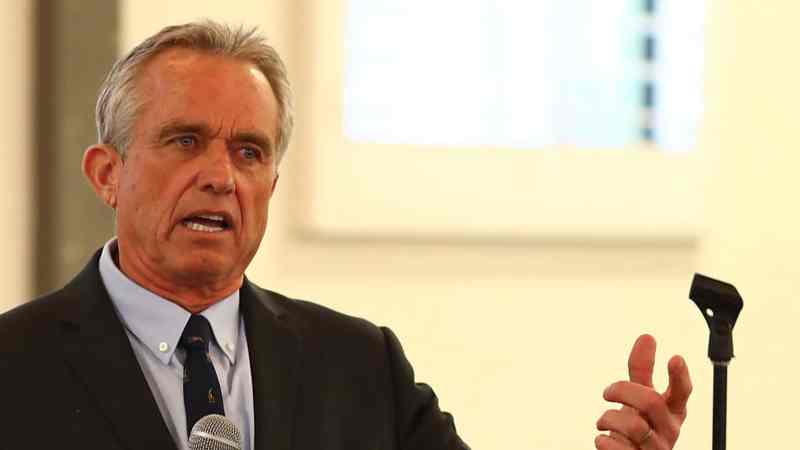 Robert F. Kennedy, Jr. gave Kim Iverson an exclusive interview last week after announcing his official candidacy for the US presidency late last week in Boston. RFK Jr. is not your typical Communist Democrat. Democrats should be very concerned about RFK Jr. making the rounds in the media. The well-known environmentalist is not a totalitarian globalist. He is a free market capitalist. That makes him unique in the Democrats' current agenda. In a recent conversation with Iverson, Kennedy said the "mega-billionaires" are using climate change to exert totalitarian control over the population. Robert F. Kennedy, Jr: Bill Gates and these big billionaires are taking advantage of climate and pollution problems. Just as COVID is being exploited to use it as an excuse to to control society from above in a totalitarian way and then give us technical solutions. And if we take a closer look, it turns out that the people who push these technical solutions are also the owners of IPS, that is, the owners of the patents for the solutions. In this way, they have given climate chaos a bad name because people now see it as just another crisis being used to rob the poor of their wealth and enrich the billionaires. And I have been advocating the same policy on climate and technology for 40 years. You can read my speeches in the 1980s, in which I said that the most important solution to environmental problems is not top-down. Not control from above. This is free market capitalism. then give us technical solutions. And if we take a closer look, it turns out that the people who push these technical solutions are also the owners of IPS, that is, the owners of the patents for the solutions. In this way, they have given climate chaos a bad name because people now see it as just another crisis being used to rob the poor of their wealth and enrich the billionaires. And I have been advocating the same policy on climate and technology for 40 years. You can read my speeches in the 1980s, in which I said that the most important solution to environmental problems is not top-down. Not control from above. This is free market capitalism. then give us technical solutions. And if we take a closer look, it turns out that the people who push these technical solutions are also the owners of IPS, that is, the owners of the patents for the solutions. In this way, they have given climate chaos a bad name because people now see it as just another crisis being used to rob the poor of their wealth and enrich the billionaires. And I have been advocating the same policy on climate and technology for 40 years. You can read my speeches in the 1980s, in which I said that the most important solution to environmental problems is not top-down. Not control from above. This is free market capitalism. those who enforce these technical solutions are also the owners of IPS, i.e. the owners of the patents for the solutions. In this way, they have given climate chaos a bad name because people now see it as just another crisis being used to rob the poor of their wealth and enrich the billionaires. And I have been advocating the same policy on climate and technology for 40 years. You can read my speeches in the 1980s, in which I said that the most important solution to environmental problems is not top-down. Not control from above. This is free market capitalism. those who enforce these technical solutions are also the owners of IPS, i.e. the owners of the patents for the solutions. In this way, they have given climate chaos a bad name because people now see it as just another crisis being used to rob the poor of their wealth and enrich the billionaires. And I have been advocating the same policy on climate and technology for 40 years. You can read my speeches in the 1980s, in which I said that the most important solution to environmental problems is not top-down. Not control from above. This is free market capitalism. that this is just another crisis being used to rob the poor of their wealth and enrich the billionaires. And I have been advocating the same policy on climate and technology for 40 years. You can read my speeches in the 1980s, in which I said that the most important solution to environmental problems is not top-down. Not control from above. This is free market capitalism. that this is just another crisis being used to rob the poor of their wealth and enrich the billionaires. And I have been advocating the same policy on climate and technology for 40 years. You can read my speeches in the 1980s, in which I said that the most important solution to environmental problems is not top-down. Not control from above. This is free market capitalism.
Robert F. Kennedy, Jr. gave Kim Iverson an exclusive interview last week after announcing his official candidacy for the US presidency late last week in Boston. RFK Jr. is not your typical Communist Democrat. Democrats should be very concerned about RFK Jr. making the rounds in the media. The well-known environmentalist is not a totalitarian globalist. He is a free market capitalist. That makes him unique in the Democrats' current agenda. In a recent conversation with Iverson, Kennedy said the "mega-billionaires" are using climate change to exert totalitarian control over the population. Robert F. Kennedy, Jr: Bill Gates and these big billionaires are taking advantage of climate and pollution problems. Just as COVID is being exploited to use it as an excuse to to control society from above in a totalitarian way and then give us technical solutions. And if we take a closer look, it turns out that the people who push these technical solutions are also the owners of IPS, that is, the owners of the patents for the solutions. In this way, they have given climate chaos a bad name because people now see it as just another crisis being used to rob the poor of their wealth and enrich the billionaires. And I have been advocating the same policy on climate and technology for 40 years. You can read my speeches in the 1980s, in which I said that the most important solution to environmental problems is not top-down. Not control from above. This is free market capitalism. then give us technical solutions. And if we take a closer look, it turns out that the people who push these technical solutions are also the owners of IPS, that is, the owners of the patents for the solutions. In this way, they have given climate chaos a bad name because people now see it as just another crisis being used to rob the poor of their wealth and enrich the billionaires. And I have been advocating the same policy on climate and technology for 40 years. You can read my speeches in the 1980s, in which I said that the most important solution to environmental problems is not top-down. Not control from above. This is free market capitalism. then give us technical solutions. And if we take a closer look, it turns out that the people who push these technical solutions are also the owners of IPS, that is, the owners of the patents for the solutions. In this way, they have given climate chaos a bad name because people now see it as just another crisis being used to rob the poor of their wealth and enrich the billionaires. And I have been advocating the same policy on climate and technology for 40 years. You can read my speeches in the 1980s, in which I said that the most important solution to environmental problems is not top-down. Not control from above. This is free market capitalism. those who enforce these technical solutions are also the owners of IPS, i.e. the owners of the patents for the solutions. In this way, they have given climate chaos a bad name because people now see it as just another crisis being used to rob the poor of their wealth and enrich the billionaires. And I have been advocating the same policy on climate and technology for 40 years. You can read my speeches in the 1980s, in which I said that the most important solution to environmental problems is not top-down. Not control from above. This is free market capitalism. those who enforce these technical solutions are also the owners of IPS, i.e. the owners of the patents for the solutions. In this way, they have given climate chaos a bad name because people now see it as just another crisis being used to rob the poor of their wealth and enrich the billionaires. And I have been advocating the same policy on climate and technology for 40 years. You can read my speeches in the 1980s, in which I said that the most important solution to environmental problems is not top-down. Not control from above. This is free market capitalism. that this is just another crisis being used to rob the poor of their wealth and enrich the billionaires. And I have been advocating the same policy on climate and technology for 40 years. You can read my speeches in the 1980s, in which I said that the most important solution to environmental problems is not top-down. Not control from above. This is free market capitalism. that this is just another crisis being used to rob the poor of their wealth and enrich the billionaires. And I have been advocating the same policy on climate and technology for 40 years. You can read my speeches in the 1980s, in which I said that the most important solution to environmental problems is not top-down. Not control from above. This is free market capitalism.Continue to the article
Continue to the article
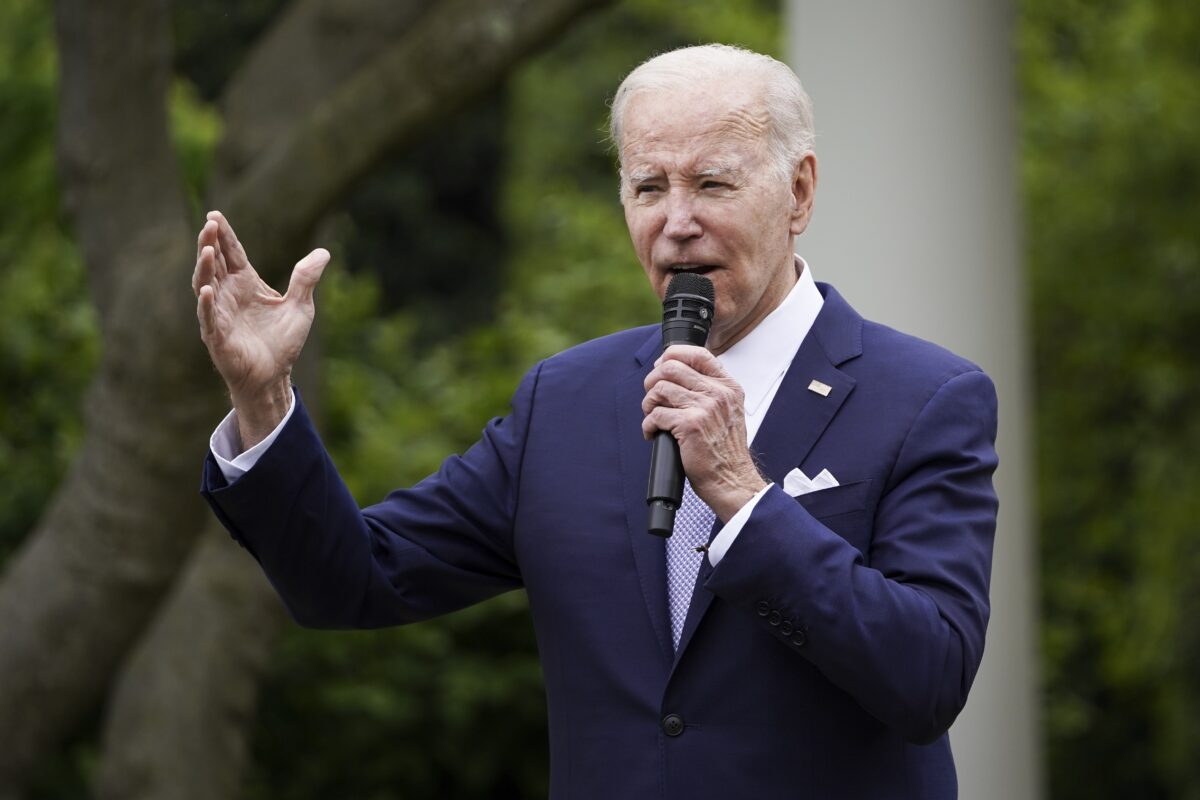 The Biden administration is eliminating a number of requirements for the COVID-19 vaccine, including the requirement that foreign travelers show proof of vaccination against COVID-19, officials said May 1. The mandate for noncitizen nonimmigrants arriving by air will expire on May 12, as will mandates for federal workers and federal contractors, the White House said. The vaccination certificate required at the land borders of the United States will also end on May 12, the US Department of Homeland Security announced. Obligations for Head Start workers and health facilities certified by federal regulators will also be phased out in the future, the administration said, though no specific dates were given. Each agency, among them, the obligations prescribed by the National Institutes of Health will remain in effect for the time being, the White House told the Associated Press. The mandates were imposed by President Joe Biden and his top aides in 2021 as the administration tried to increase the number of Americans vaccinated, despite growing evidence that vaccines provide temporary protection against symptomatic infection and hospitalization. Some of the vaccination requirements have been blocked in court, including one for federal workers, after judges said they were likely illegal. One for large private employers was rejected by the Supreme Court, and another for members of the military was repealed by a bill passed by Congress.
The Biden administration is eliminating a number of requirements for the COVID-19 vaccine, including the requirement that foreign travelers show proof of vaccination against COVID-19, officials said May 1. The mandate for noncitizen nonimmigrants arriving by air will expire on May 12, as will mandates for federal workers and federal contractors, the White House said. The vaccination certificate required at the land borders of the United States will also end on May 12, the US Department of Homeland Security announced. Obligations for Head Start workers and health facilities certified by federal regulators will also be phased out in the future, the administration said, though no specific dates were given. Each agency, among them, the obligations prescribed by the National Institutes of Health will remain in effect for the time being, the White House told the Associated Press. The mandates were imposed by President Joe Biden and his top aides in 2021 as the administration tried to increase the number of Americans vaccinated, despite growing evidence that vaccines provide temporary protection against symptomatic infection and hospitalization. Some of the vaccination requirements have been blocked in court, including one for federal workers, after judges said they were likely illegal. One for large private employers was rejected by the Supreme Court, and another for members of the military was repealed by a bill passed by Congress.Continue to the article
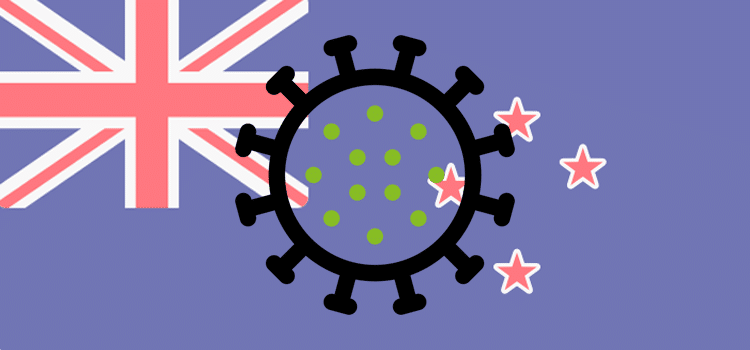 Sacrificing our dreams of personal autonomy for a "common good" defined by a class of shadow billionaires. I was recently shocked to hear from a highly respected writer, a sharp-witted analyst of the Corona agenda, here in New Zealand, at a gathering of real doctors who advocate informed consent, individualized treatment and the like, that we should get used to less freedom. I vividly remember the moment when the wise, kind, avuncular figure spoke to us through a projected video, because as I looked around in fright, no one else batted an eye. What exactly did he mean by that? I'm not sure - but I have an eerie feeling that three years after the Corona avalanche, people have been "gently" persuaded to accept yet another abnormal loss of freedom, even from those who who are apparently in our freedom movements. Maybe because we have all been beaten to a pulp by relentless warnings about the ever-present infectious dangers, the inevitably catastrophic consequences of climate change, and the inevitable dangers of overpopulation? The message is that we - by which I mean ordinary people, those who work and struggle for a living - must sacrifice our dreams of personal autonomy for a common good defined by a class of shadowy and not so shadowy billionaire elitists who are so servile they are represented by their institutions, such as the UN, the World Health Organization, the World Economic Forum, the Association of State Medical Chambers and the like. because we have all been beaten to a pulp by relentless warnings about the ever-present infectious dangers, the inevitably catastrophic consequences of climate change, and the inevitable dangers of overpopulation? The message is that we - by which I mean ordinary people, those who work and struggle for a living - must sacrifice our dreams of personal autonomy for a common good defined by a class of shadowy and not so shadowy billionaire elitists who are so servile they are represented by their institutions, such as the UN, the World Health Organization, the World Economic Forum, the Association of State Medical Chambers and the like. because we have all been beaten to a pulp by relentless warnings about the ever-present infectious dangers, the inevitably catastrophic consequences of climate change, and the inevitable dangers of overpopulation? The message is that we - by which I mean ordinary people, those who work and struggle for a living - must sacrifice our dreams of personal autonomy for a common good defined by a class of shadowy and not so shadowy billionaire elitists who are so servile they are represented by their institutions, such as the UN, the World Health Organization, the World Economic Forum, the Association of State Medical Chambers and the like. relentless warnings about the inevitable dangers of overpopulation? The message is that we - by which I mean ordinary people, those who work and struggle for a living - must sacrifice our dreams of personal autonomy for a common good defined by a class of shadowy and not so shadowy billionaire elitists who are so servile they are represented by their institutions, such as the UN, the World Health Organization, the World Economic Forum, the Association of State Medical Chambers and the like. relentless warnings about the inevitable dangers of overpopulation? The message is that we - by which I mean ordinary people, those who work and struggle for a living - must sacrifice our dreams of personal autonomy for a common good defined by a class of shadowy and not so shadowy billionaire elitists who are so servile they are represented by their institutions, such as the UN, the World Health Organization, the World Economic Forum, the Association of State Medical Chambers and the like.
Sacrificing our dreams of personal autonomy for a "common good" defined by a class of shadow billionaires. I was recently shocked to hear from a highly respected writer, a sharp-witted analyst of the Corona agenda, here in New Zealand, at a gathering of real doctors who advocate informed consent, individualized treatment and the like, that we should get used to less freedom. I vividly remember the moment when the wise, kind, avuncular figure spoke to us through a projected video, because as I looked around in fright, no one else batted an eye. What exactly did he mean by that? I'm not sure - but I have an eerie feeling that three years after the Corona avalanche, people have been "gently" persuaded to accept yet another abnormal loss of freedom, even from those who who are apparently in our freedom movements. Maybe because we have all been beaten to a pulp by relentless warnings about the ever-present infectious dangers, the inevitably catastrophic consequences of climate change, and the inevitable dangers of overpopulation? The message is that we - by which I mean ordinary people, those who work and struggle for a living - must sacrifice our dreams of personal autonomy for a common good defined by a class of shadowy and not so shadowy billionaire elitists who are so servile they are represented by their institutions, such as the UN, the World Health Organization, the World Economic Forum, the Association of State Medical Chambers and the like. because we have all been beaten to a pulp by relentless warnings about the ever-present infectious dangers, the inevitably catastrophic consequences of climate change, and the inevitable dangers of overpopulation? The message is that we - by which I mean ordinary people, those who work and struggle for a living - must sacrifice our dreams of personal autonomy for a common good defined by a class of shadowy and not so shadowy billionaire elitists who are so servile they are represented by their institutions, such as the UN, the World Health Organization, the World Economic Forum, the Association of State Medical Chambers and the like. because we have all been beaten to a pulp by relentless warnings about the ever-present infectious dangers, the inevitably catastrophic consequences of climate change, and the inevitable dangers of overpopulation? The message is that we - by which I mean ordinary people, those who work and struggle for a living - must sacrifice our dreams of personal autonomy for a common good defined by a class of shadowy and not so shadowy billionaire elitists who are so servile they are represented by their institutions, such as the UN, the World Health Organization, the World Economic Forum, the Association of State Medical Chambers and the like. relentless warnings about the inevitable dangers of overpopulation? The message is that we - by which I mean ordinary people, those who work and struggle for a living - must sacrifice our dreams of personal autonomy for a common good defined by a class of shadowy and not so shadowy billionaire elitists who are so servile they are represented by their institutions, such as the UN, the World Health Organization, the World Economic Forum, the Association of State Medical Chambers and the like. relentless warnings about the inevitable dangers of overpopulation? The message is that we - by which I mean ordinary people, those who work and struggle for a living - must sacrifice our dreams of personal autonomy for a common good defined by a class of shadowy and not so shadowy billionaire elitists who are so servile they are represented by their institutions, such as the UN, the World Health Organization, the World Economic Forum, the Association of State Medical Chambers and the like.Continue to the article
 42-year-old photojournalist Theresa Marie Palmgren died suddenly of a pulmonary embolism on April 5, 2023, while at work.
42-year-old photojournalist Theresa Marie Palmgren died suddenly of a pulmonary embolism on April 5, 2023, while at work. 27-year-old artist and Twitch streamer Katlyn "Katie" Mae Cuneo died suddenly (of a pulmonary embolism) on March 17, 2023.
Rocio "Rose" Michelle Roberts, 27, a Pennsylvania mother of two boys, died suddenly of a pulmonary embolism on March 15, 2023, 4 days after giving birth.
46-year-old Bethany Jessica Scott Price, 46, died March 6, 2023 of a pulmonary embolism, according to those familiar with her death.
31-year-old beauty therapist Gemma Harries collapsed and died on 16 January 2023. Blood clots were found in his lungs and legs.
Clare Duffy, 41, went for a nap after waking up with a sore shoulder and Jan 2023. He died suddenly of a pulmonary embolism on the 8th.
Kelly Gleeson, a 40-year-old healthcare worker, died of a pulmonary embolism on December 29, 2022.
18-year-old cheerleader Victoria Moody died suddenly of a pulmonary embolism on October 23, 2022, after her father took her to the hospital Sunday night because she wasn't feeling well.
27-year-old NHS nurse (who worked in child and adolescent mental health) Anna Harriman died suddenly of a pulmonary embolism in July 2022.
Outreach Manager Deborah Pembrook, 51, 51, human trafficking, died suddenly on April 27, 2022, of a massive pulmonary embolism.
Cylie Noel Wyatt, 36, died suddenly on May 19, 2022, of saddle pulmonary embolism.
Rice University director of student media Kelly Lash, 46, died suddenly on February 21, 2022, died of pulmonary embolism.
28-year-old Howard University law student Saron Berhe Jan 2022. He died suddenly of a pulmonary embolism on the 17th.
23-year-old Georgina Furniss died suddenly on June 21, 2021 from a massive pulmonary embolism.
My take... Pulmonary embolism (blood clots in the lungs) as a side effect following COVID-19 mRNA vaccination has been well known since the vaccines were introduced. Here is a case report published in June 2021 of a 59-year-old woman who developed a pulmonary embolism 7 days after her 1st dose of Pfizer. They always knew. Shockingly, the World Health Organization's VigiAccess database records 29,046 pulmonary embolism side effects after the COVID-19 vaccine! For a fatal condition like pulmonary embolism, 29,000 people reporting it to the WHO is an absolutely staggering number. From what I've been told, it seems that women are more affected by this side effect, although it can happen to men as well. Although a product like The Wellness Company's Spike Support formula contains Nattokinase, an enzyme that breaks down blood clots, including those in the lungs, most people don't know they have blood clots after the COVID-19 vaccine until it's too late. That is why it is so important to wake up as many people as possible.
Continue to the article
 The results are in! After the 2019 coronavirus disease (COVID-19) pandemic spread rapidly from China to the Western world, several large pharmaceutical companies quickly developed and manufactured COVID-19 vaccines, which were then made available to the public through emergency use authorization (EUA). . And in late 2020, people around the world started receiving these vaccines. To date, 67.9 percent of the world's population has received at least one dose of the COVID-19 vaccine, according to Our World in Data. While only 22.5 percent of people in low-income countries have received a dose of the COVID-19 vaccine, in developed countries the vaccination rate is generally high - typically around 80 percent. For example, the G7 countries' COVID-19 vaccination rates are as follows: 79.19 percent in the United States, 86.96 percent in Canada, 80.92 percent in France, 77.66 percent in Germany, 85.82 percent in Italy, 83.60 percent in Japan and 79.97 percent in the United Kingdom. The study did not show that mental stress was caused only by discrimination. Anyone who is exposed to restrictions, discrimination and/or even hostile behavior from others in all areas of life over a long period of time can suffer from a high degree of mental stress. In conclusion, this study provides unique data on the unvaccinated "control group" in the context of the global gigantic experiment aimed at mass vaccination of the population with newly developed vaccines, new technologies. In addition, it provides an important reference basis for public health professionals to evaluate the policy decision-making process in terms of the effects of individual policies on different communities. For example, public health emergencies often present dilemmas in terms of public health ethical considerations. But we still have to ask the question: do we adhere to the ethical standards of "do no harm"?
The results are in! After the 2019 coronavirus disease (COVID-19) pandemic spread rapidly from China to the Western world, several large pharmaceutical companies quickly developed and manufactured COVID-19 vaccines, which were then made available to the public through emergency use authorization (EUA). . And in late 2020, people around the world started receiving these vaccines. To date, 67.9 percent of the world's population has received at least one dose of the COVID-19 vaccine, according to Our World in Data. While only 22.5 percent of people in low-income countries have received a dose of the COVID-19 vaccine, in developed countries the vaccination rate is generally high - typically around 80 percent. For example, the G7 countries' COVID-19 vaccination rates are as follows: 79.19 percent in the United States, 86.96 percent in Canada, 80.92 percent in France, 77.66 percent in Germany, 85.82 percent in Italy, 83.60 percent in Japan and 79.97 percent in the United Kingdom. The study did not show that mental stress was caused only by discrimination. Anyone who is exposed to restrictions, discrimination and/or even hostile behavior from others in all areas of life over a long period of time can suffer from a high degree of mental stress. In conclusion, this study provides unique data on the unvaccinated "control group" in the context of the global gigantic experiment aimed at mass vaccination of the population with newly developed vaccines, new technologies. In addition, it provides an important reference basis for public health professionals to evaluate the policy decision-making process in terms of the effects of individual policies on different communities. For example, public health emergencies often present dilemmas in terms of public health ethical considerations. But we still have to ask the question: do we adhere to the ethical standards of "do no harm"?The road leading to the canopy walkway without leaves was closed
. April 30, 2023. 444.hu
The European Commission is already investigating the project, thanks to which a canopy walkway built with 60 million EU grants now stands in a clearing in the middle of a forest in Nyírmártonfalva, Hajdú-Bihar county. The innovative Hungarian development quickly became a tourist attraction, but it looks like it is over now, because according to Magyar Narancs, the mayor of the village, Filemon Mihály from Fidesz, closed the road leading there.
One of the newspaper's readers reported that when he wanted to admire the special structure, he was greeted by a sign that read: "Private area! No unauthorized entry!" Incidentally, the owner of the area is Filemon Mihály, the mayor of Nyírmártonfalva, who has promised to sue all media outlets that reported on the promenade. But according to Mancs, you can still see the little Hungarian miracle from the road.

Video: Former soldiers of the National Defense go to court
More than 150 soldiers were demobilized by the National Defense in December because they did not receive the mandatory covid vaccination.
Before demobilization, they were sent on unpaid leave for a year, but they were not allowed to take up jobs elsewhere.
The soldiers appealed to the court in Strasbourg, and the Hungarian Helsinki Committee is assisting them.
Video: What country is this?
. April 30, 2023. 444.hu
The European Commission is already investigating the project, thanks to which a canopy walkway built with 60 million EU grants now stands in a clearing in the middle of a forest in Nyírmártonfalva, Hajdú-Bihar county. The innovative Hungarian development quickly became a tourist attraction, but it looks like it is over now, because according to Magyar Narancs, the mayor of the village, Filemon Mihály from Fidesz, closed the road leading there.
One of the newspaper's readers reported that when he wanted to admire the special structure, he was greeted by a sign that read: "Private area! No unauthorized entry!" Incidentally, the owner of the area is Filemon Mihály, the mayor of Nyírmártonfalva, who has promised to sue all media outlets that reported on the promenade. But according to Mancs, you can still see the little Hungarian miracle from the road.

Video: Former soldiers of the National Defense go to court
More than 150 soldiers were demobilized by the National Defense in December because they did not receive the mandatory covid vaccination.
Before demobilization, they were sent on unpaid leave for a year, but they were not allowed to take up jobs elsewhere.
The soldiers appealed to the court in Strasbourg, and the Hungarian Helsinki Committee is assisting them.
Video: What country is this?
Continue to the article
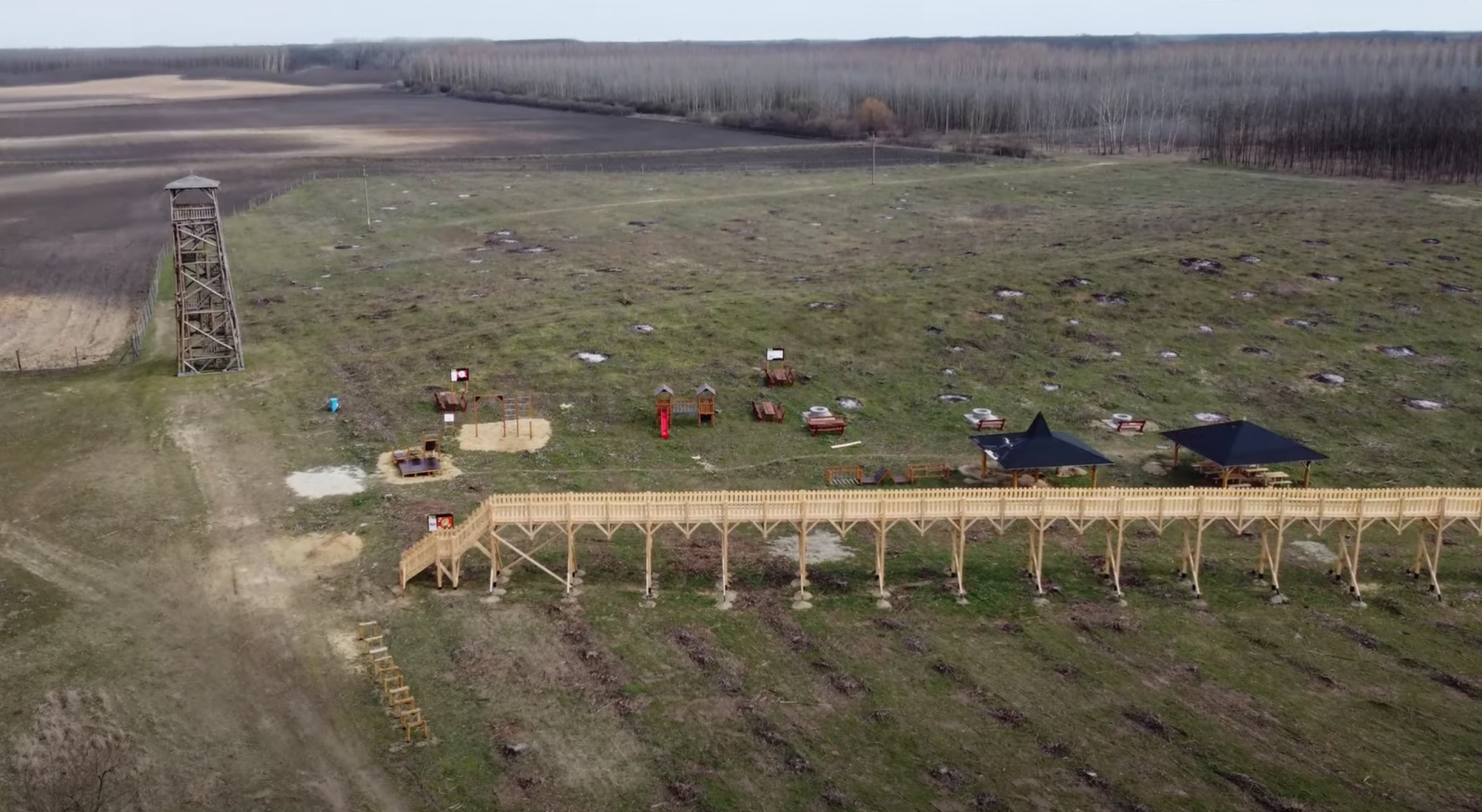 ATV Híradó contacted the mayor of Nyírmártonfalva regarding the canopy walk without leaves, who did not want to make a statement to the TV on the grounds that since the media had insulted and discredited him in the recent period regarding the canopy walk, he is suing all the media who reported on it, and until this is not the end, he does not want to talk to anyone until then. Átlátszó originally wrote that the forest was cut down in the Hajdú-Bihar county settlement around the canopy walkway built with 60 million EU grants. According to the forester who spoke to ATV, although tree planting has already begun, it will take up to 5-10 years to have foliage.
ATV Híradó contacted the mayor of Nyírmártonfalva regarding the canopy walk without leaves, who did not want to make a statement to the TV on the grounds that since the media had insulted and discredited him in the recent period regarding the canopy walk, he is suing all the media who reported on it, and until this is not the end, he does not want to talk to anyone until then. Átlátszó originally wrote that the forest was cut down in the Hajdú-Bihar county settlement around the canopy walkway built with 60 million EU grants. According to the forester who spoke to ATV, although tree planting has already begun, it will take up to 5-10 years to have foliage.Continue to the article
 "The way we are used to it and the way we don't want it doesn't exist anymore", a cultural change is needed in the Hungarian Armed Forces. Among other things, Gábor Böröndi, the new Chief of Staff of the Hungarian Defense Forces, spoke about this before the national defense and law enforcement committee of the parliament on Tuesday afternoon. According to Kristóf Szalay-Bobrovniczky, it is necessary to move from the military level to the operational level, and he also explained why he unexpectedly replaced the head of the national defense. "The right person must be in the right place." This is how Szalay-Bobrovniczky justified the decision to propose a new Chief of Staff to head the Hungarian Defense Forces: Romolusz Ruszin-Szendi will be replaced by Gábor Böröndi. "Romolusz Ruszin-Szendi is an excellent soldier, an excellent person, he performed his task accurately and precisely," the minister praised the head of the national defense, who was replaced last Thursday. However, Ruszin-Szendi primarily performed military tasks, and the protracted war requires operational level knowledge and expertise. According to the Minister of National Defense, the task of the Hungarian armed forces is to adapt to the protracted war situation, and to build a more combat-capable, well-equipped, serious army with a changed culture.
"The way we are used to it and the way we don't want it doesn't exist anymore", a cultural change is needed in the Hungarian Armed Forces. Among other things, Gábor Böröndi, the new Chief of Staff of the Hungarian Defense Forces, spoke about this before the national defense and law enforcement committee of the parliament on Tuesday afternoon. According to Kristóf Szalay-Bobrovniczky, it is necessary to move from the military level to the operational level, and he also explained why he unexpectedly replaced the head of the national defense. "The right person must be in the right place." This is how Szalay-Bobrovniczky justified the decision to propose a new Chief of Staff to head the Hungarian Defense Forces: Romolusz Ruszin-Szendi will be replaced by Gábor Böröndi. "Romolusz Ruszin-Szendi is an excellent soldier, an excellent person, he performed his task accurately and precisely," the minister praised the head of the national defense, who was replaced last Thursday. However, Ruszin-Szendi primarily performed military tasks, and the protracted war requires operational level knowledge and expertise. According to the Minister of National Defense, the task of the Hungarian armed forces is to adapt to the protracted war situation, and to build a more combat-capable, well-equipped, serious army with a changed culture.